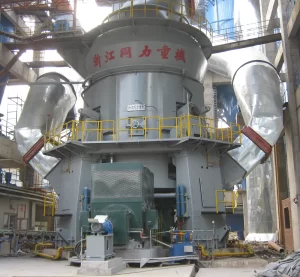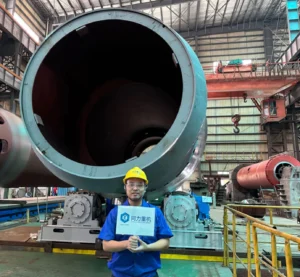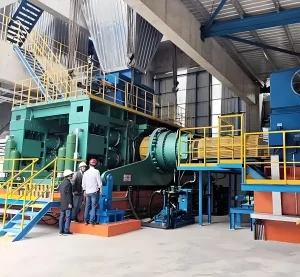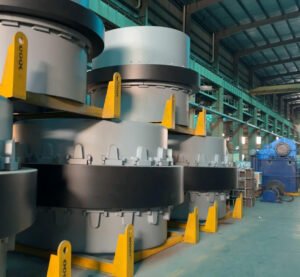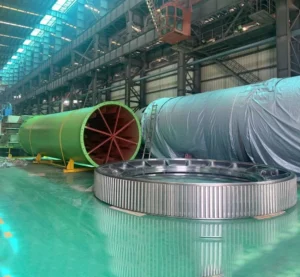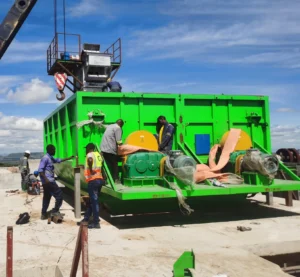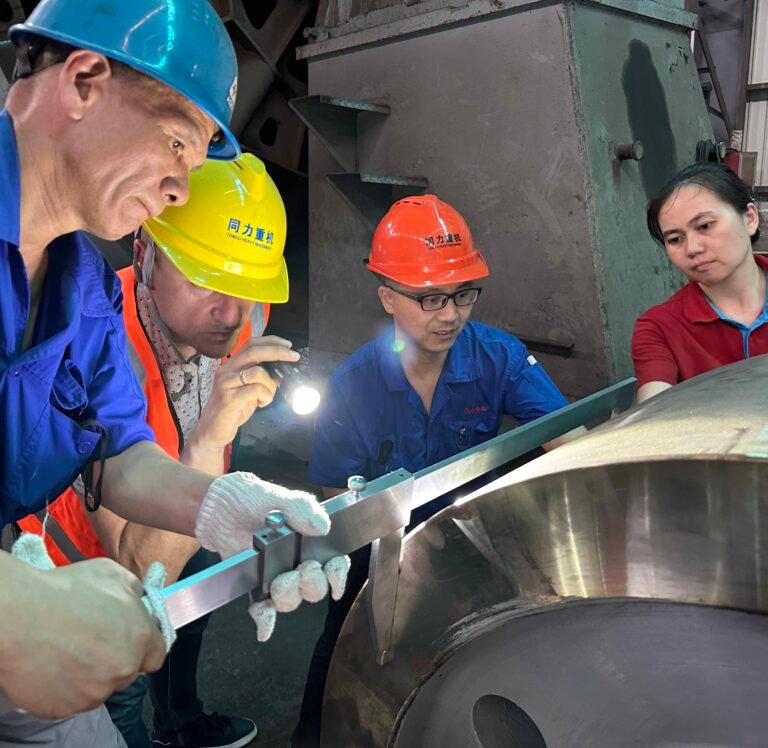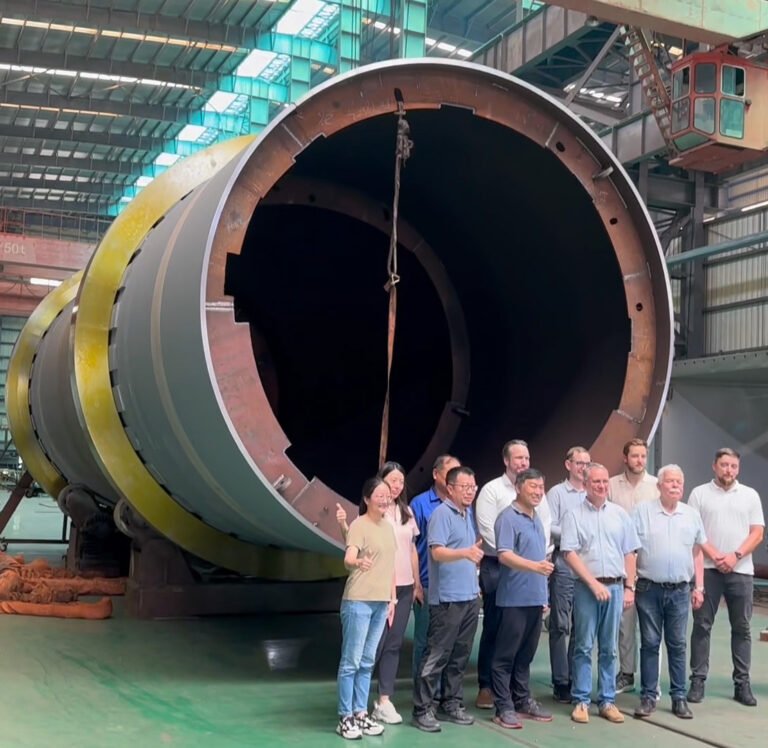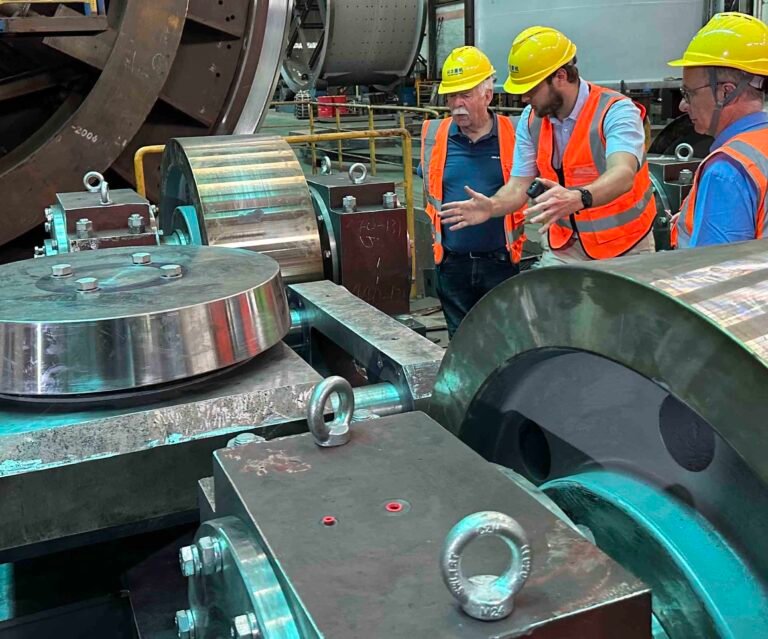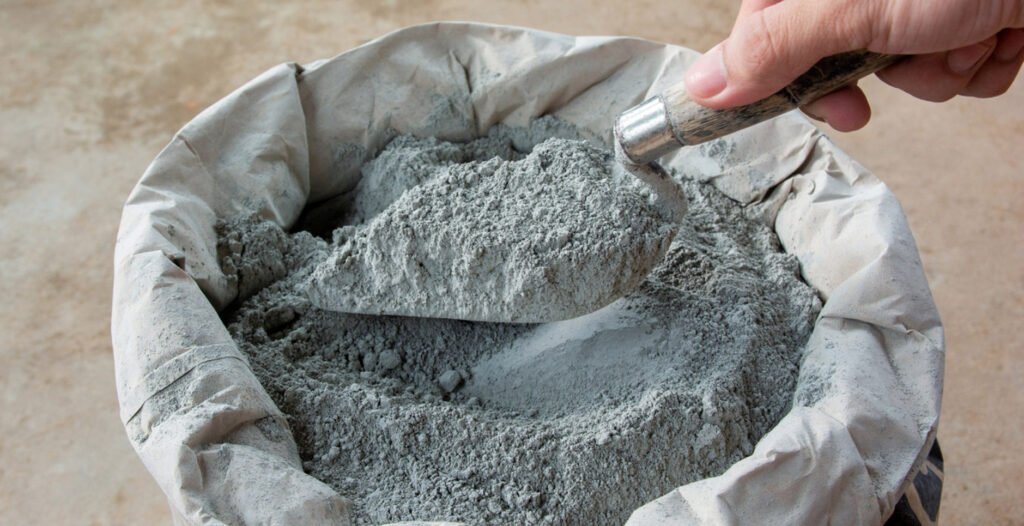
What is PPC in Cement?
Portland pozzolana cement (PPC) is a blended cement whose composition is based on a specific material ratio and preparation process: the core ingredients include Portland clinker, pozzolana particles, and gypsum. Portland clinker is made by finely grinding limestone and clay and calcining them in a high-temperature kiln to form pebble-like particles. It is the basis for the strength generated by the cement hydration reaction. When clinker and gypsum are mixed and ground in proportion, they can be made into ordinary Portland cement (OPC). PPC is based on OPC and further incorporates pozzolana particles formed by natural volcanic eruptions or industrial by-products such as artificial fly ash and silica fume. The pozzolana content must meet relevant standards and is generally 20%-50%. This composition gives PPC unique properties: the pozzolana particles undergo a secondary reaction with the calcium hydroxide generated by cement hydration, which not only improves the later strength of concrete, but also reduces the heat of hydration and improves impermeability and resistance to chemical corrosion. So first of all we need to know what is pozzolana becasue it is an important raw material of PPC.
What is Pozzolana?
Pozzolana is a unique material. Unlike cement, it doesn't react directly with water to harden. However, when it comes into contact with lime and water, it undergoes a chemical reaction, producing a viscous substance like glue, which helps the material become stronger. This ability to react with lime to generate strength is its core value, also known as "volcanic ash activity." At the same time, there are two types of pozzolana, natural and artificial.
Natural Pozzolana:
Natural pozzolans refer to naturally occurring materials with volcanic activity, primarily derived from volcanic activity or geological sedimentation. Typical examples include volcanic ash, pumice, shale, clay, and diatomaceous earth:
- Volcanic ash formed from eruptions: Fine-grained volcanic debris formed by the rapid cooling of magma during a volcanic eruption, rich in reactive silica and alumina. Examples include the ash from Vesuvius in Italy (the ash from the Pozzuoli region is the origin of the name "Pozzolana").
- Diatomaceous earth: Siliceous rock formed by the sedimentation of plankton remains such as diatoms, with extremely high porosity and reactive SiO₂ content.
- Tuff: Sedimentary rock formed by the deposition and cementation of volcanic ash, which exhibits volcanic activity after crushing and grinding.
The activity of natural pozzolan is significantly affected by the formation environment, and grinding is often required to increase its specific surface area to enhance its reaction efficiency with calcium hydroxide. Historically, natural pozzolan was widely used in Roman concrete (such as the Pantheon dome). When mixed with lime, it formed a cementitious material exhibiting excellent durability.
Artificial Pozzolana:
Artificial pozzolans refer to byproducts or artificially prepared materials with pozzolanic activity produced through industrial production or processing. Their activity is usually produced through high-temperature calcination in rotary kilns and grinding machines such as vertical mills or ball mills. They include burnt clay, silica fume, fly ash from coal-fired power plants, blast furnace slag, etc.
- Fly ash: Solid waste from the combustion of pulverized coal in coal-fired power plants. Its main components are reactive SiO₂ and Al₂O₃. Based on combustion temperature, it can be divided into low-calcium fly ash (Class F) and high-calcium fly ash (Class C, which also has some self-hardening properties).
- Silica fume (microsilica fume): Ultrafine powder collected and processed from the smelting of ferrosilicon or metallic silicon in ferroalloy plants. Its SiO₂ content can reach over 90%, making it extremely reactive and significantly improving the density of concrete.
- Granulated blast furnace slag: Granulated material formed by quenching molten slag from the blast furnaces of steel mills. Although often classified separately as a slag-cement admixture, its reactivity with calcium hydroxide also meets the definition of a pozzolan.
- Calcined clay: Clay (such as kaolin) undergoes calcination at 600-900°C, transforming its mineral structure into reactive metakaolin. It has recently become an important environmentally friendly alternative to natural pozzolans.
The widespread use of artificial pozzolana not only solves the problem of industrial waste disposal, but also reduces cement consumption by optimizing concrete performance, playing a key role in energy conservation, emission reduction and sustainable construction.
4 Types of Portland Pozzolana Cement
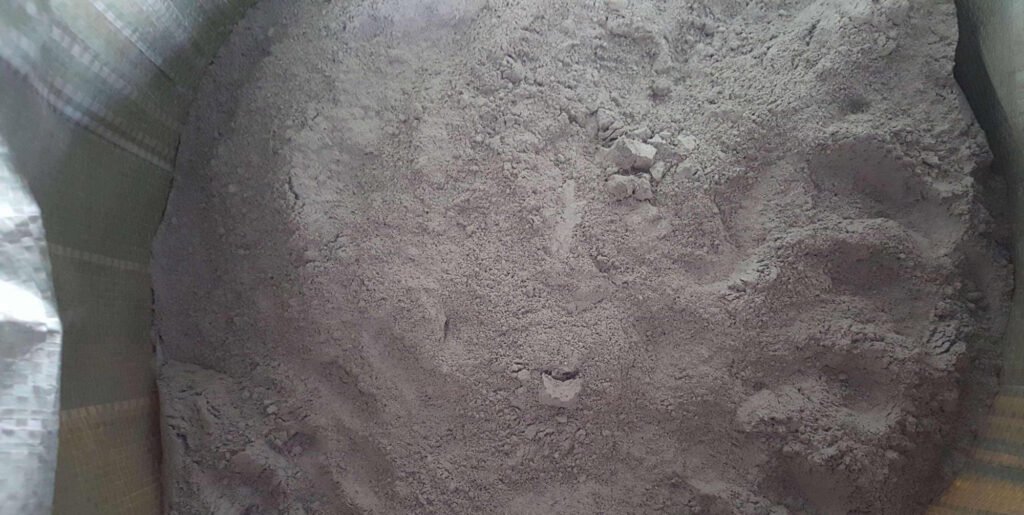
The performance of composite Portland cement (PPC) is closely related to the type of pozzolan material added. The chemical composition, activity and particle characteristics of different pozzolans will give the cement unique technical indicators. Based on the type of pozzolan used, PPC can be mainly divided into the following categories
Fly Ash-Based Composite Portland Cement (PPC)
Fly ash-based PPC is a composite cement with fly ash as the primary pozzolanic admixture. Its core component is fly ash (typically Class F low-calcium fly ash, with a SiO₂+Al₂O₃+Fe₂O₃ content ≥70%) generated from coal-fired power plants, mixed with Portland cement clinker and gypsum at a ratio of 20%-50%, and then ground together.
- Performance Characteristics: Fly ash's spherical particle shape improves cement workability and reduces water requirements. Its slow pozzolanic reaction results in slightly lower early strength than ordinary Portland cement, but significant later strength growth (after 28 days) is achieved. It also has a low heat of hydration and excellent sulfate and impermeability resistance.
- Applications: Suitable for large-volume concrete projects such as hydraulic dams and bridge piers, underground structures such as tunnels and basements, and buildings in humid environments. Because it utilizes industrial waste, it aligns with the concept of green building materials and is also widely used in civil construction.
Calcined Clay-Based Composite Portland Cement (PPC)
Calcined clay-based PPC uses calcined clay as a pozzolan admixture. Its raw material is an active product such as metakaolin formed by calcining natural clays such as kaolin and montmorillonite at 600-900°C. The admixture content is typically 20%-40%.
- Performance Characteristics: The activity of calcined clay primarily stems from the amorphous structure formed by the dehydroxylation of clay minerals (such as kaolinite) during calcination. This structure reacts rapidly with calcium hydroxide, resulting in higher early strength than fly ash-based PPC and better later strength stability. Furthermore, its particle size distribution optimizes cement density and improves the concrete's resistance to carbonation and chloride ion penetration.
- Application scenarios: Suitable for structural engineering projects with certain requirements for early strength (such as frame structures and prefabricated components). Due to the wide distribution of clay resources and low cost, it is an ideal choice in areas lacking industrial waste. In recent years, it has attracted much attention in the research and development of low-carbon cement.
Natural pozzolan-based PPC:
Utilizing natural volcanic ash such as Vesuvius ash and volcanic tuff in Italy as an admixture, it boasts a long history. Its activity stems from its naturally occurring silica-alumina components, resulting in mild performance and outstanding durability. It is suitable for the restoration of historic buildings or projects in special geological environments where long-term stability is crucial.
Silica fume-based PPC:
Silica fume or so called microsilica is a byproduct of ferrosilicon smelting, boasting a SiO₂ content exceeding 90% and extremely high activity. It is often combined with other volcanic ashes (at low individual dosages, generally ≤10%) to significantly enhance the strength and density of cement, making it suitable for specialized projects such as high-strength concrete and wear-resistant flooring.
What is the Composition of PPC cement?
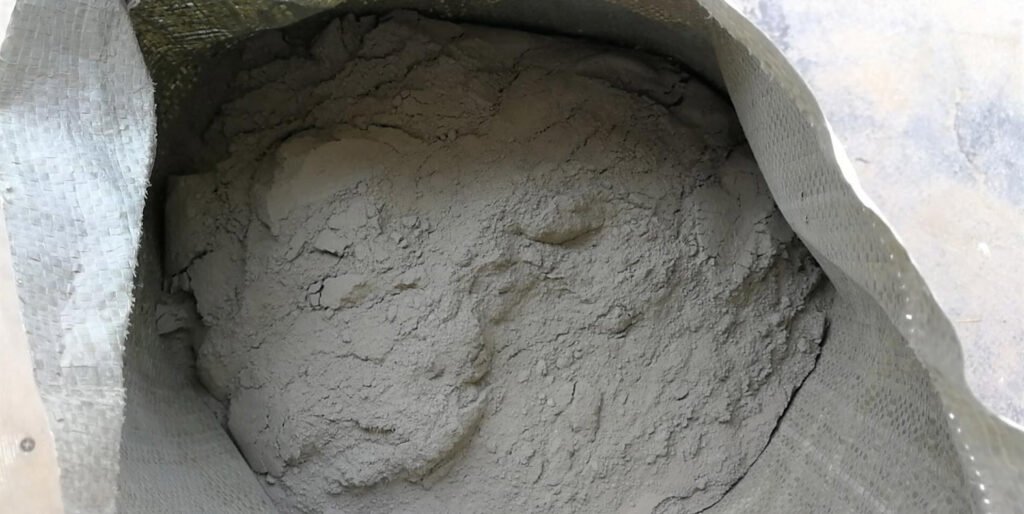
Portland Pozzolana Cement (PPC) is composed of Portland cement clinker, pozzolanic materials, gypsum, and may also contain a small amount of kiln dust. The following is a detailed introduction:
- Portland cement clinker: According to GB175 - 2023, its proportion is ≥50% and <80%. It is the main component of PPC, formed by high - temperature sintering of raw materials such as limestone and clay, and is the basis for the cement's strength and binding properties.
- Pozzolanic materials: The content is 20% - 50%. PPC can simultaneously incorporate two or more pozzolanic materials, including fly ash, slag, volcanic ash, limestone, etc. These materials can react with calcium hydroxide produced by the hydration of clinker to generate additional cementitious substances, improving the durability and other properties of cement.
- Gypsum: Usually accounting for about 4% - 6%. Its main function is to regulate the setting time of cement, slowing down the hydration speed of tricalcium aluminate in clinker, so that the cement has enough time for mixing, transportation and placement.
- Kiln dust: According to the regulations, PPC allows no more than 8% of kiln dust to replace part of the pozzolanic materials. Kiln dust is a by - product in the cement production process, which contains certain cementitious components and can affect the properties of cement to a certain extent.
If you want to know about the composition in detail, we made a table here:
| Composition | Percentage by weight |
| Tricalcium silicate (C₃S / Alite) | 25% |
| Dicalcium silicate (C₂S / Belite) | 20% |
| Tricalcium aluminate (C₃A) | 6% |
| Tetracalcium aluminoferrite (C₄AF) | 8% |
| Fly ash / Pozzolanic ash | 30% |
| Gypsum | 5% |
| Sodium oxide (Na₂O) | 0.4% |
| Potassium oxide (K₂O) | 0.6% |
Below is the introduction of each of the composition of the PPC cement:
Tricalcium silicate (C₃S / Alite) – 25%
The most abundant silicate phase in cement clinker, C₃S is critical for early strength development. It hydrates rapidly when mixed with water, releasing calcium hydroxide and forming calcium silicate hydrate (C-S-H) – the main binder that gives cement its strength. Its quick reaction contributes to the initial setting and hardening of concrete, making it vital for early structural stability.
Dicalcium silicate (C₂S / Belite) – 20%
A slower-reacting silicate phase, C₂S hydrates gradually over time, primarily contributing to long-term strength (beyond 7–14 days). It produces less heat during hydration compared to C₃S and forms C-S-H as its main hydration product. Its presence enhances the durability and later-age strength of the cement, ensuring sustained performance over the structure’s lifespan.
Tricalcium aluminate (C₃A) – 6%
A highly reactive aluminate phase, C₃S hydrates very quickly, releasing significant heat. It contributes minimally to strength but plays a key role in the initial setting process. However, its rapid reaction can cause flash setting (premature hardening) if unregulated, which is why gypsum is added to control it. C₃A is also susceptible to sulfate attacks, which is why its content is often limited in cements designed for sulfate-rich environments.
Tetracalcium aluminoferrite (C₄AF) – 8%
A ferrite phase that reacts moderately with water, producing calcium aluminoferrite hydrates. It generates less heat than C₃A and contributes marginally to strength. Its primary role is to reduce the clinker’s melting point during manufacturing, aiding the sintering process. It also helps minimize the cement’s color intensity, giving it a grayish hue, and improves resistance to certain chemical attacks.
Fly ash / Pozzolanic ash – 30%
A pozzolanic byproduct of coal combustion, fly ash is rich in silica and alumina. In PPC, it reacts with calcium hydroxide (a byproduct of clinker hydration) to form additional C-S-H, enhancing long-term strength and durability. It reduces hydration heat (beneficial for mass concrete), improves workability, and lowers permeability, making the concrete more resistant to sulfate and chloride attacks. Its inclusion also promotes sustainability by reusing industrial waste.
Gypsum (Calcium sulfate dihydrate, CaSO₄·2H₂O) – 5%
Added as a setting regulator, gypsum slows the rapid hydration of C₃A, preventing flash setting and ensuring the cement remains workable long enough for mixing, placing, and finishing. It reacts with C₃A to form ettringite, a needle-like crystal that delays the formation of monosulfate (which would cause rapid setting). Proper gypsum content is critical – too little causes quick setting, while too much can weaken the concrete over time.
Sodium oxide (Na₂O) – 0.4%
A minor alkali component, typically present as an impurity from raw materials (e.g., clay or limestone). Alkalis like Na₂O can react with silica in aggregates (alkali-silica reaction, ASR), causing expansion and cracking in concrete over time. The low 0.4% content here is generally manageable, but total alkali levels (when combined with K₂O) are monitored to avoid ASR in sensitive applications.
Potassium oxide (K₂O) – 0.6%
Another alkali impurity, K₂O behaves similarly to Na₂O. Together with Na₂O, it contributes to the total alkali content of the cement. At 0.6%, it is relatively low, but when combined with Na₂O (total ~1.0%), it is kept within safe limits to minimize the risk of ASR. Trace amounts may also influence the cement’s setting time and early hydration rate.
Properties of Portland Pozzolana Cement
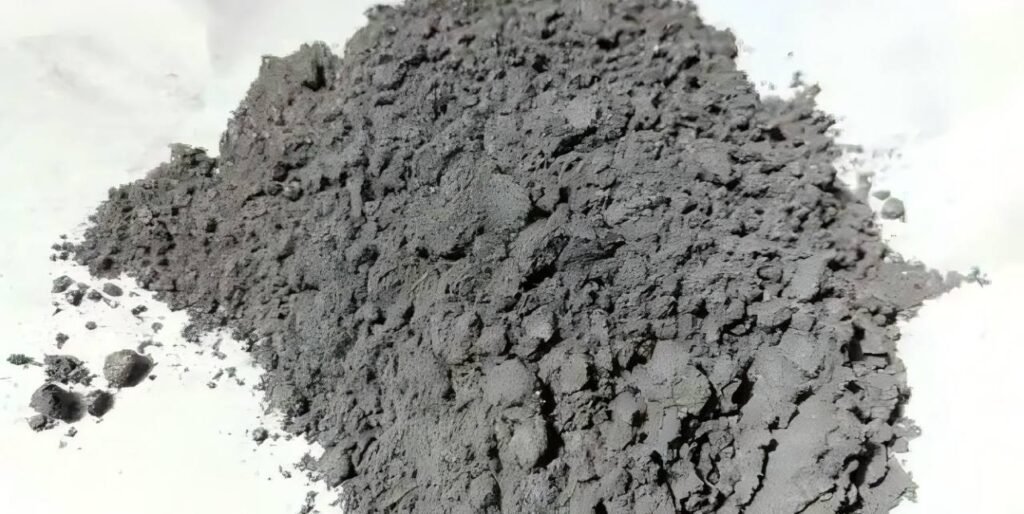
Portland Pozzolana Cement (PPC) has several important properties. Its initial setting time is about 30 minutes, and the final setting time is around 10 hours. The compressive strength of PPC reaches a minimum of 13 MPa in 3 days, 22 MPa in 7 days, and 33 MPa in 28 days. These are the minimum strength values expected at each stage. The maximum dry shrinkage of PPC should not go beyond 0.15%. The fineness of PPC should be at least 300 square meters per kilogram. Compared to Ordinary Portland Cement (OPC), PPC gains strength more slowly in the beginning, but over time, its final strength becomes equal to that of OPC.
Fineness
Fineness reflects the coarseness of cement particles, which directly affects the specific surface area and hydration reaction rate: finer particles increase the specific surface area, resulting in a wider hydration contact area and a correspondingly faster hydration heat release rate. For PPC, the specific surface area must meet a minimum requirement of 300 m2/kg (this indicator ensures sufficient contact between the pozzolanic material and the clinker particles, providing a foundation for subsequent pozzolanic reactions). In actual production, the specific surface area of PPC is typically controlled between 300-350 m2/kg to ensure hydration activity while avoiding excessive water demand or increased shrinkage due to excessive fineness.
Soundness
Soundness refers to the stability of cement's volume change during setting and hardening. Uneven volume change can easily lead to cracking in concrete. According to the Le Chatelier method, the expansion rate of unaerated PPC must be strictly controlled: the expansion value must not exceed 10 mm, and the relative expansion rate must not exceed 0.8%. This requirement ensures that PPC's structural integrity is not compromised by drastic internal volume changes during hydration and subsequent use. Its stability is primarily due to the pozzolanic material's consumption of free calcium hydroxide, reducing volume instability caused by the expansion of Ca(OH)₂ crystals.
Initial Setting Time
The initial setting time refers to the time from the moment cement and water are mixed to the moment the paste begins to lose its plasticity. The initial setting time for PPC is at least 30 minutes. This allows ample operating window for concrete transportation, pouring, and vibration, preventing disruptions to construction due to excessively rapid setting. The addition of pozzolanic material generally slightly slows the initial setting process, making PPC construction easier to control at room temperature.
Final Setting Time
The final setting time refers to the time it takes for the cement paste to completely lose its plasticity and begin to develop strength. The maximum final setting time for PPC should not exceed 600 minutes (10 hours). Excessive final setting times will extend the curing period and impact construction progress. During production, the final setting rate is controlled by adjusting the gypsum content (usually 3%-5%) to ensure that the cement hardens within a reasonable timeframe and enters the strength development stage.
Compressive Strength
Compressive strength reflects the ability of PPC-based concrete to withstand loads without cracking or deflection. Its development exhibits a distinct time-dependent characteristic: the compressive strength should be ≥16 MPa at 3 days, ≥22 MPa at 7 days, and ≥33 MPa at 28 days. This characteristic is related to the hysteresis of the pozzolanic reaction—early strength depends primarily on clinker hydration. Later (after 28 days), the secondary reaction between the pozzolanic ash and calcium hydroxide continues to produce cementitious products, further increasing strength and meeting the long-term load-bearing requirements of the structure.
Drying Shrinkage
Drying shrinkage refers to the volumetric shrinkage of hardened concrete due to evaporation of water from the pores. Excessive shrinkage can easily lead to surface cracks. PPC's drying shrinkage should not exceed 0.15%, a performance superior to some common cements. This is because the hydration products generated by the pozzolanic reaction fill the pores within the cement paste, reducing the number and diameter of capillary pores and, consequently, the shrinkage stress caused by water evaporation. This lower drying shrinkage makes PPC advantageous in large-volume concrete and exposed structures, reducing the risk of shrinkage cracking.
Benefits of PPC
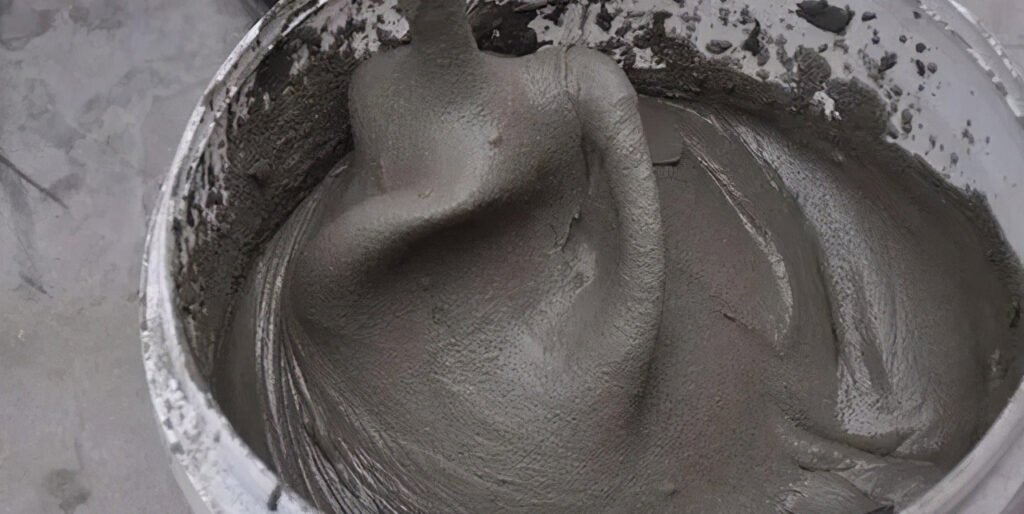
- Eco-friendly Composition: PPC is an environmentally sustainable cement as it utilizes industrial by-products like fly ash or calcined clay, reducing the carbon footprint and promoting recycling of waste materials.
- Improved Strength Over Time: The pozzolanic reaction between fly ash and the calcium hydroxide (lime) released during hydration forms additional cementitious compounds (calcium silicate hydrate), enhancing the long-term strength and durability of concrete.
- Enhanced Workability: The finer particles in PPC improve the mix's cohesiveness, leading to better workability and ease of handling during placement and compaction.
- Reduced Bleeding and Segregation: PPC minimizes bleeding (excess water rising to the surface) and segregation, ensuring a more uniform and consistent concrete mix.
- Low Heat of Hydration: PPC generates less heat during hydration, which reduces the risk of thermal cracking—especially useful in mass concrete structures like dams, retaining walls, and thick foundations.
- Cost-Effective Material: With the inclusion of low-cost pozzolanic materials, PPC is generally more economical than Ordinary Portland Cement (OPC), especially for large-scale projects.
- High Sulphate Resistance: PPC offers good resistance to sulphate and chloride attacks, making it ideal for marine and sewage-related structures or constructions in aggressive soil and groundwater conditions.
- Corrosion Resistance: By reducing permeability and preventing the ingress of harmful salts, CO₂, and moisture, PPC protects embedded steel reinforcement from corrosion, thus extending the service life of structures.
- Reduced Permeability: The additional C-S-H gel formed in pozzolanic reaction refines the pore structure of hardened concrete, significantly reducing permeability to water and harmful chemicals.
- Minimized Shrinkage and Cracking: Finer pozzolanic particles fill micro-voids in the concrete matrix, reducing shrinkage and minimizing cracking risks as the concrete dries.
- Better Surface Finish: PPC provides a smoother and denser surface, which is beneficial for architectural and aesthetic applications.
- Thermal and Chemical Stability: PPC concrete exhibits better resistance to chemical attacks and has improved performance under temperature variations, enhancing its durability in extreme environments.
How is PPC Made?
The manufacturing process of PPC begins with the intimate grinding of materials containing lime, silica, alumina, and iron oxide. This ground mixture is then heated at extremely high temperatures in a kiln to form Portland clinker. Subsequently, the Portland clinker is further ground together with either fly ash, calcined clay, or other pozzolana particles—with the pozzolana constituent making up 10 to 25% by mass of the final PPC—or alternatively, Portland cement is uniformly blended with the pozzolana particles. During the grinding process, natural or chemical gypsum may be added to regulate the setting time of the cement. Below is the process in 3 stpes in detail:
Raw Material Preparation Grinding
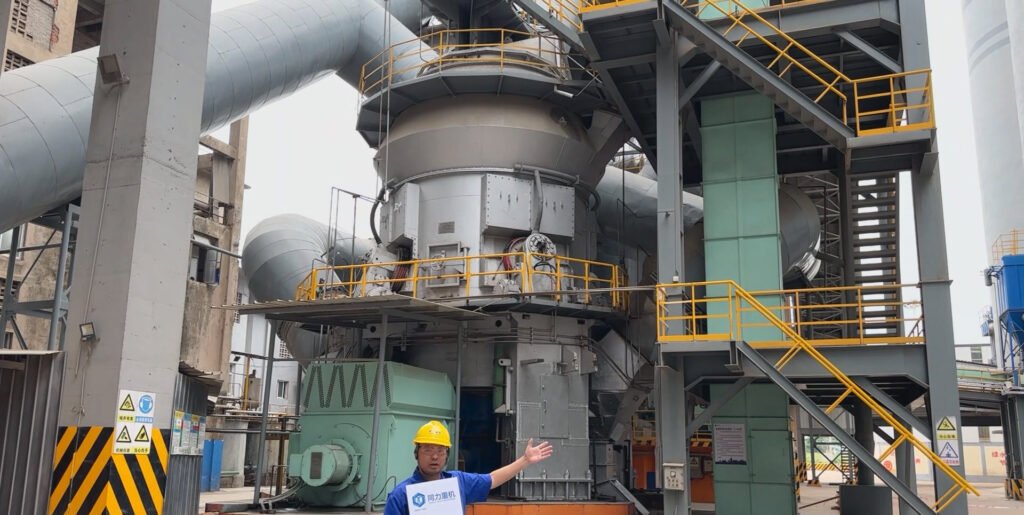
PPC production begins with the mixing and grinding of raw materials. First, raw materials containing lime (CaO), silica (SiO₂), alumina (Al₂O₃), and iron oxide (Fe₂O₃) are mixed in specific proportions. These raw materials primarily include limestone (providing CaO), clay (providing SiO₂ and Al₂O₃), and iron powder (supplementing Fe₂O₃). After crushing, these raw materials are finely ground in a vertical roller mill. Using the compaction action of high-pressure rollers and grinding discs, the mill grinds the raw materials into a uniformly fine raw meal (typically ≤10% residue on an 80μm sieve). A hot air system is used to dry the raw materials to ensure a consistent moisture content (typically ≤1%). The ground raw meal undergoes homogenization to ensure a stable composition, paving the way for subsequent calcination.
Clinker Calcination Process
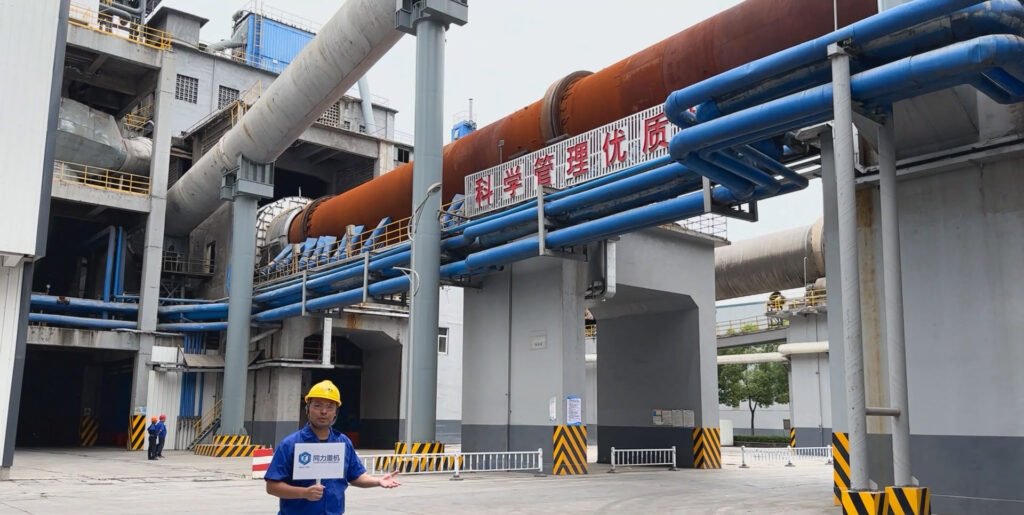
The homogenized raw meal is fed through a feeding system into a rotary kiln for high-temperature calcination. A rotary kiln is an inclined cylindrical drum, with internal temperatures gradually increasing from the feed end to the discharge end, reaching a maximum of approximately 1450°C. Within the kiln, the raw meal undergoes drying, preheating, decomposition (calcium carbonate decomposes into CaO and CO₂), and calcination. In the calcination zone, CaO reacts chemically with SiO₂, Al₂O₃, and Fe₂O₃ to form Portland cement clinker, primarily composed of tricalcium silicate (C₃S), dicalcium silicate (C₂S), tricalcium aluminate (C₃A), and tetracalcium aluminoferrite (C₄AF). The calcined clinker, in a molten state, is rapidly cooled in a kiln head cooler to form uniformly sized "pebble-like" particles. The cooled clinker temperature drops below 100°C, making it easier to process.
Mixed Grinding Process
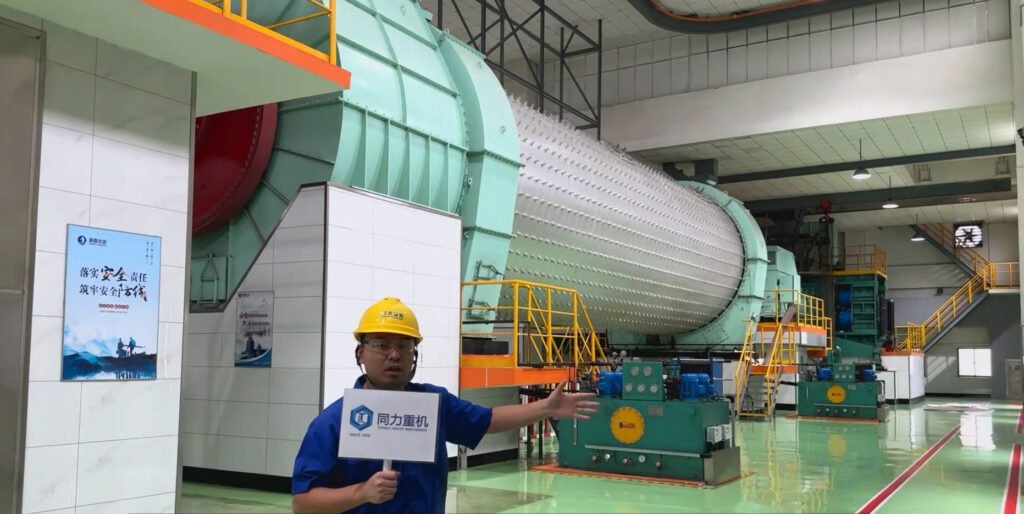
The final formation of PPC relies on the mixed grinding of clinker and pozzolanic materials. First, cooled Portland cement clinker, pozzolanic materials (such as fly ash and calcined clay, with the amount controlled at 10%-25% of the total PPC mass), and gypsum (natural or chemical gypsum, used to adjust the cement's setting time) are mixed in the correct proportions. These materials are then ground together in a ball mill. The impact and abrasive action of steel balls in the mill grinds the materials to a specified fineness (typically ≤30% on a 45μm sieve) while ensuring uniform mixing of the components. During the grinding process, the gypsum reacts with the aluminates in the clinker, effectively preventing rapid setting of the cement. The pozzolanic particles are then mechanically dispersed throughout the cement system, ultimately forming a composite Portland cement (PPC) with pozzolanic activity. The ground cement is then classified in a classifier, and the qualified product is then sent to storage for packaging or shipped in bulk.
Synthetic pozzolans
Synthetic pozzolans are essentially artificial volcanic ash, just called by a different name. They refer to materials that exhibit pozzolanic activity, prepared through artificial processing or synthesis. Their chemical composition is rich in silica (SiO₂) and alumina (Al₂O₃). They react at room temperature with calcium hydroxide (Ca(OH)₂) produced by cement hydration to form gelling products (such as calcium silicate gel), thereby improving the performance of cement-based materials. Common types include silica fume (microsilica fume, processed from a byproduct of ferrosilicon alloy production), metakaolin (made by kaolin activated by high-temperature calcination), and fly ash (an industrial byproduct that can also be classified as synthetic when treated to meet activity requirements). These materials are widely used in concrete to increase strength, reduce hydration heat, and improve durability (such as impermeability and corrosion resistance).
PPC Cement Grades
PPC Different countries have different standards. In international standards, Portland Pozzolana Cement (PPC) is classified into different grades based on specific performance criteria, with variations across regions. Here are key examples from major standards:
American Standards (ASTM C595/C595M)
In the United States, Portland Pozzolana Cement commonly known as PPC in countries like India is defined under the ASTM C595 standard, which covers blended hydraulic cements.
- Type IP Portland-Pozzolan Cement – a blend of Portland cement and pozzolanic material (e.g., fly ash, volcanic ash). It improves durability, reduces permeability, and lowers heat of hydration.
- Type IP(MS) Moderate Sulfate Resistant Portland-Pozzolan Cement – same as Type IP but offers extra protection against sulfate attack, suitable for foundations and marine structures.
- Type I(PM) Pozzolan-Modified Portland Cement – Portland cement modified with small amounts of pozzolan (less than 15%).
- Type I(PM)(MS) Pozzolan-Modified Cement with Moderate Sulfate Resistance – combines sulfate resistance with pozzolan benefits.
ASTM C150/C150M-22
This specification includes eight types of Portland cement: Type I, Type IA, Type II, Type IIA, Type III, Type IIIA, Type IV, and Type V. These cements must be made only from the following ingredients: Portland cement clinker, water or calcium sulfate (or both), limestone, processing additives, and air-entraining agents (if needed for air-entraining cement). Each type must contain certain chemical compounds, including aluminum oxide, iron oxide, magnesium oxide, sulfur trioxide, tricalcium silicate, dicalcium silicate, tricalcium aluminate, and tetracalcium aluminoferrite. Properties of the cement are tested by methods that measure air content, chemical makeup, strength, setting time, fineness, heat of hydration, expansion, and sulfate resistance. The cement must be stored in a dry, weather-proof building where each shipment can be easily inspected and clearly identified.
- 1.1 This specification covers ten types of portland cement, as follows (see Note 2):
- 1.2Type I—For general use, when the special properties specified for any other type are not required.
- 1.3Type IA—Air-entraining cement for the same uses as Type I, where air-entrainment is desired.
- 1.4Type II—For general use, more especially when moderate sulfate resistance is desired.
- 1.5Type IIA—Air-entraining cement for the same uses as Type II, where air-entrainment is desired.
- 1.6Type II(MH)—For general use, more especially when moderate heat of hydration and moderate sulfate resistance are desired.
- 1.7Type II(MH)A—Air-entraining cement for the same uses as Type II(MH), where air-entrainment is desired.
- 1.8Type III—For use when high early strength is desired.
- 1.9Type IIIA—Air-entraining cement for the same use as Type III, where air-entrainment is desired.
- 1.10Type IV—For use when a low heat of hydration is desired.
- 1.11Type V—For use when high sulfate resistance is desired.
- Note 1: Some cements are designated with a combined type classification, such as Type I/II, indicating that the cement meets the requirements of the indicated types and is being offered as suitable for use when either type is desired.
- Note 2: Cement conforming to the requirements for all types are not carried in stock in some areas. In advance of specifying the use of cement other than Type I, determine whether the proposed type of cement is or can be made available.
- 1.2 The values stated in either SI units or inch-pound units are to be regarded separately as standard. The values stated in each system may not be exact equivalents; therefore, each system shall be used independently of the other. Combining values from the two systems may result in non-conformance with the standard. Values in SI units [or inch-pound units] shall be obtained by measurement in SI units [or inch-pound units] or by appropriate conversion, using the Rules for Conversion and Rounding given in IEEE/ASTM SI 10, of measurements made in other units [or SI units]. Values are stated in only SI units when inch-pound units are not used in practice.
British Standards (BS EN 197-1)
BS EN 196-2, "Test Methods of Cement. Chemical Analysis of Cement," specifies methods for chemical analysis of cement, describing benchmark methods and, in some cases, providing equivalent alternative methods. These methods can be used to determine the content of various chemical components in PPC cement, such as chloride, carbon dioxide, and alkali, to assess whether the cement's chemical composition meets the standard requirements.
BS EN 197-6, "Standard Specification for Cement for Recycled Building Materials," was published and implemented by BSI on June 30, 2023. This standard specifies the relevant standards for cement containing recycled concrete fines. Its intended use is to prepare concrete, mortar, cement slurry, etc. If PPC cement uses recycled concrete fines as a mixing material, it must comply with the relevant requirements of this standard.
BS EN 197-1 is the European standard that lists the specifications for different types of cement. It defines 27 types of common cement, 7 types of sulfate-resistant common cement, 3 types of low early strength blast furnace cement, and 2 sulfate-resistant low early strength blast furnace cements. The standard also explains how the ingredients should be mixed and in what amounts. It sets rules for the chemical, physical, and mechanical properties that these cements must meet. In addition, the standard gives the rules for checking if the cement meets quality standards. It also includes requirements for durability, making sure the cement lasts long under different environmental conditions.
| Standard Cement Name | EN Code | Description |
| Portland-composite cement | CEM II/B-P | Contains 21–35% pozzolana (fly ash, natural pozzolana) mixed with Portland cement clinker |
| Pozzolanic cement | CEM IV/A or CEM IV/B | CEM IV/A: Contains 11–35% pozzolanaCEM IV/B: Contains 36–55% pozzolana |
European Standards (EN 197-1)
CEM I – Portland Cement
- Contains 95–100% Portland cement clinker.
- May include up to 5% minor additional constituents like limestone, fly ash.
- Used for general construction where high early strength is needed.
CEM II – Portland-Composite Cement
- CEM II/A (80–94% clinker):
- CEM II/A-L or A-LL: With limestone
- CEM II/A-V: With siliceous fly ash
- CEM II/A-S: With blast furnace slag
- CEM II/A-T: With natural pozzolana
- CEM II/A-D: With silica fume
- CEM II/A-P: With natural pozzolana (Puzzolanic material)
- CEM II/B (65–79% clinker):
- CEM II/B-L or B-LL: With limestone
- CEM II/B-V: With siliceous fly ash
- CEM II/B-S: With slag
- CEM II/B-T: With natural pozzolana
- CEM II/B-D: With silica fume
- CEM II/B-P: With pozzolana
CEM III – Blast Furnace Cement
- CEM III/A: 35–64% slag
- CEM III/B: 65–79% slag
- CEM III/C: 80–94% slag
CEM IV – Pozzolanic Cement
- CEM IV/A: 11–35% pozzolana
- CEM IV/B: 36–55% pozzolana
CEM V – Composite Cement
- CEM V/A: 40–64% clinker
- CEM V/B: 20–38% clinker
Indian Standards (IS 1489: Part 1 & 2)
In India, Portland Pozzolana Cement (PPC) is governed by the Bureau of Indian Standards (BIS) under the specification IS 1489. This standard is divided into two parts: IS 1489 (Part 1) covers fly ash-based PPC, while IS 1489 (Part 2) covers calcined clay-based PPC. Both types are widely used in Indian construction due to their enhanced durability, sustainability, and cost-effectiveness. The key pozzolanic materials used are fly ash (a byproduct of coal combustion) and calcined clay (processed natural clay). These materials, when combined with Portland cement clinker and gypsum, form a blended cement with long-term strength development and improved resistance to chemical attack.
According to IS 1489 (Part 1: 2015), the composition of PPC must include 15% to 35% pozzolanic material by weight, with the remaining proportion made up of Portland clinker, gypsum, and minor additional materials (if any). For fly ash-based PPC, the fly ash used must conform to IS 3812 (Part 1) and be reactive enough to contribute to the cement's strength and durability. Gypsum is added primarily to control the setting time, ensuring the mix remains workable during application.
PPC must meet specific physical and chemical requirements to ensure its performance. It should have a minimum fineness of 300 m²/kg, and its initial setting time must not be less than 30 minutes, while the final setting time should not exceed 600 minutes. The compressive strength should reach at least 33 MPa after 28 days, making it suitable for most general construction applications. It also has low heat of hydration, which reduces the risk of thermal cracking in large concrete pours. PPC exhibits better chemical resistance, especially against sulfates and chlorides, making it ideal for marine structures, dams, and sewage works.
In practice, PPC is used widely across India for residential buildings, commercial complexes, infrastructure projects, and mass concreting works. It is particularly preferred in environments where long-term durability is crucial, or where the risk of aggressive chemical attack exists. Additionally, PPC supports environmental sustainability since it incorporates industrial by-products like fly ash, reducing reliance on pure clinker and lowering CO₂ emissions during production. The cement bags must be clearly labeled with product details, including the type, manufacturer’s name, ISI mark, and batch information, as per BIS requirements.
Applications of PPC?
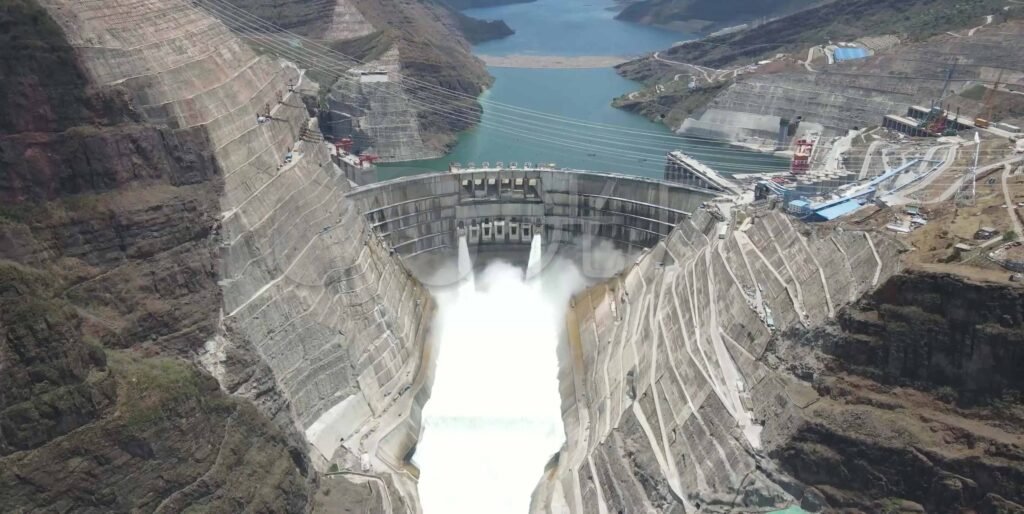
There are many applications of ppc, we list some of them in here:
- PPC is widely used in hydraulic structures like dams that are submerged fully or partially in water to disrupt the natural flow of water.
- PPC is also effective for marine structures like piers, wharfs, bridges, etc. erected in sea water.
- It can be used to form pre-stressed or post-tensioned concrete members.
- You can use PPC effectively in masonry and plasterwork as well.
- PPC offers a superior surface finish, making it ideal for decorative structures.
- PPC is also suitable for developing precast sewage pipes.
- It is used in the construction of residential, commercial, and industrial buildings due to its long-term durability.
- PPC is ideal for mass concreting works like foundations, retaining walls, and raft slabs because it generates less heat during hydration.
- It is preferred for rural construction projects, including low-cost housing and sanitation infrastructure.
- PPC can be used in road pavements and highway construction for enhanced strength and resistance to sulphate attack.
- It is suitable for construction in aggressive environments, such as chemical plants and wastewater treatment plants.
- PPC is commonly used in brickwork and block making for non-load-bearing walls.
- It is used for canal linings, spillways, and culverts due to its good resistance to water penetration.
What is Natural pozzolanic materials
Natural pozzolans materials are a special class of naturally occurring raw materials with volcanic properties. They include both naturally occurring minerals untouched by human intervention and calcined volcanic eruption residues. The core of this property lies in their ability to chemically react with calcium hydroxide produced during cement hydration to form a stable, gelling compound, thereby enhancing the material's strength and durability. Specifically, the family of natural pozzolans is rich and diverse. Diatomaceous earth is a siliceous rock formed by the sedimentation of ancient diatom remains. It is light, porous, rich in silicon dioxide, and is one of the more reactive natural volcanic ashes. Opal flint is mainly composed of opal, with a hard texture and fine structure. After crushing and grinding, it can show good volcanic ash activity. Tuff is formed by the sedimentation and consolidation of volcanic debris. Due to differences in the formation environment, its composition and activity will fluctuate to a certain extent. Although shale is a sedimentary rock, some silica-rich shales have volcanic ash characteristics in their natural state, but more often they need to be calcined to activate their potential activity. Volcanic ash or pumice is a direct product of volcanic eruptions. Volcanic ash is fine volcanic debris, and pumice is light in texture due to its porous interior. Both are typical representatives of natural volcanic ash.
What is OPC Cement?
OPC, or ordinary Portland cement, is primarily made from Portland cement clinker, with a small amount of gypsum (usually 3%-5%) ground into a fine powder. It is not mixed with, or contains no more than 5% of, mixed materials. It is characterized by high early strength (rapid strength growth after 3 and 7 days), high heat of hydration, and moderate setting time (initial setting ≥45 minutes, final setting ≤600 minutes), making it suitable for a wide range of applications.
OPC Vs. PPC Cement: What is the difference?
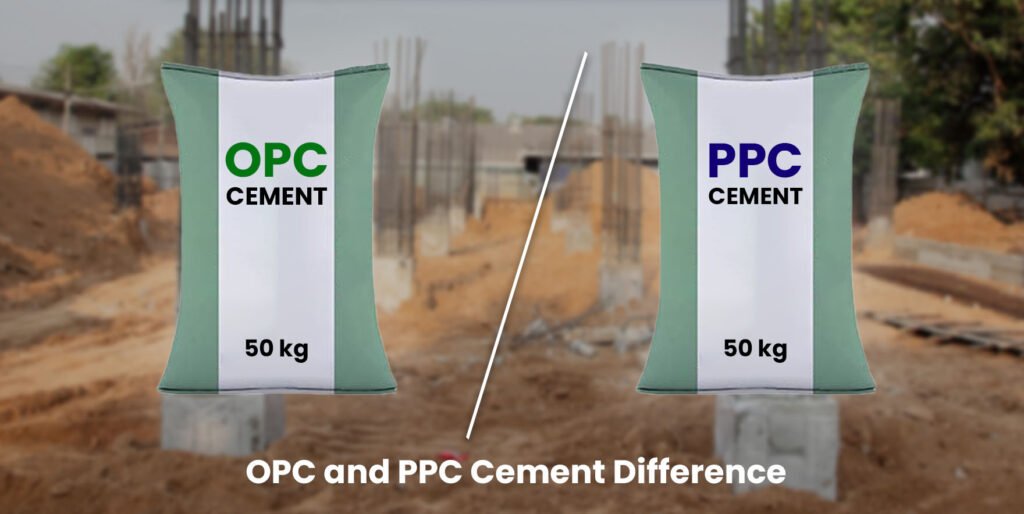
So in order to make you understand it better we have made a comparison table below:
| Criteria | OPC Cement (Ordinary Portland Cement) | PPC Cement (Portland Pozzolana Cement) |
| Full Name | Ordinary Portland Cement | Portland Pozzolana Cement |
| Composition & Production | Primarily composed of Portland clinker (70-75%), gypsum (3-5%), and minor amounts of limestone. Raw materials include calcareous substances (limestone, 60-70%), argillaceous materials (silica 17-25%, alumina 3-8%, iron oxide 0.5-6%), and gypsum. Manufactured by grinding clinker (produced via high-temperature kilning of raw materials) with gypsum to regulate setting time. | Made by blending OPC clinker with 15-35% pozzolanic materials (e.g., fly ash, volcanic ash, calcined clay, silica fume) and gypsum, then inter-grinding. Pozzolanic materials are industrial by-products or natural minerals, enhancing performance through pozzolanic reactions. |
| Grades | Classified into 33, 43, and 53 grades under BIS (Bureau of Indian Standards), corresponding to 28-day compressive strengths of ≥33MPa, ≥43MPa, and ≥53MPa, respectively. | No specific graded classifications. Performance is roughly equivalent to OPC 33 grade but exceeds OPC in long-term strength. Available with standardized properties for general construction. |
| Strength Characteristics | High early strength: ~35N/mm² at 3 days, ~43.5N/mm² at 7 days, ~55N/mm² at 28 days. Slow long-term strength growth, eventually surpassed by PPC. | Lower early strength: ~23N/mm² at 3 days, ~39N/mm² at 7 days, but reaches ~56.5N/mm² at 28 days. Sustained strength gain due to pozzolanic reactions, exceeding OPC in the long term. |
| Setting Time | Initial setting time ≥30 minutes; final setting time ≤280 minutes (~11.7 hours). Fast setting facilitates quick construction and early formwork removal. | Initial setting time ≥30 minutes; final setting time ≤600 minutes (25 hours). Slower setting allows better workability and finishing, suitable for projects requiring extended handling time. |
| Fineness | Specific surface area ~225m²/kg. Coarser particles result in higher permeability of concrete. | Specific surface area ~300m²/kg. Finer particles (including pozzolans) reduce permeability and improve density by filling pores. |
| Heat of Hydration | Rapid hydration generates high heat, risking thermal cracking in mass concrete (e.g., dams). Unsuitable for large-volume pours. | Slow hydration produces less heat, minimizing thermal stress. Ideal for mass concreting (e.g., dams, bridge piers). |
| Durability | Lower durability in aggressive environments due to higher permeability. More susceptible to chemical attacks (e.g., sulfates, chlorides). | Superior durability with low permeability. Enhanced resistance to chemical 侵蚀 (sulfates, chlorides, alkalis) due to pozzolanic reactions, making it suitable for long-lasting structures. |
| Workability | Lower workability; requires more water for adequate flow. | Higher workability; requires less water, with better flow characteristics for easier mixing, placing, and compaction. |
| Cost | More expensive due to high energy consumption in clinker production. | More cost-effective, as pozzolanic materials (often industrial waste) reduce reliance on clinker, lowering production costs. |
| Environmental Impact | Higher carbon footprint: High-temperature kilning emits significant CO₂; relies heavily on natural resources (e.g., limestone). | More eco-friendly: Uses industrial by-products, reducing clinker demand and CO₂ emissions. Minimizes waste accumulation and resource depletion. |
| Applications | Suitable for general construction (residential/commercial buildings, precast elements) where early strength and fast construction are prioritized. Not ideal for mass concreting or aggressive environments. | Versatile for mass concreting (dams, bridges), marine structures, coastal areas, industrial facilities, and plastering. Excels in harsh environments due to durability and chemical resistance. |
| Curing Requirements | Minimum 7 days of curing; 10 days in hot weather. Lower curing costs. | Minimum 10 days of curing; 14 days in hot weather. Longer curing needed to support slow strength development. |
| BIS Standards & Marking | Standards: IS 269 (33 grade), IS 8112 (43 grade), IS 12269 (53 grade). ISI mark is red. | Standard: IS 1991 (Parts 1 & 2). ISI mark is red. |
The most comprehensive comparison of PPC and OPC
1. Initial Strength
OPC has significantly better early strength than PPC. For example, in M30 concrete, the 28-day compressive strength is approximately 37 MPa for OPC and 35.5 MPa for PPC. In M40 concrete, OPC is approximately 43.7 MPa and PPC is approximately 41.2 MPa. OPC has a high clinker ratio and a high C₃S content, resulting in a faster early reaction. PPC, on the other hand, has lower early strength due to the slower reaction of fly ash.
- OPC develops initial strength quickly, with its 3-day compressive strength typically reaching 50%-60% of its 28-day strength, allowing it to quickly meet early load-bearing requirements.
- PPC has lower initial strength, with its 3-day compressive strength typically only 30%-40% of its 28-day strength, and its early strength growth is slower.
2. Long-Term Strength
PPC's strength increases significantly after 28 days, approaching that of OPC at 90 days. The M30 and M40 data above show that PPC's strength growth trend from 28 to 90 days is similar to that of OPC, with the gap narrowing over time and superior strength in the later stages. This is typically due to secondary hydration.
- OPC's long-term strength growth is limited, with minimal gains after 28 days. This primarily relies on the early hydration products of the clinker.
- PPC's long-term strength continues to increase due to the ongoing pozzolanic reaction of mixed materials (such as fly ash and slag). This allows for significant strength gains after 28 days, and in some cases, can even exceed the long-term strength of similar-grade OPC.
3. Heat of Hydration
Typical data shows that OPC (grade 43) accumulates approximately 280 kJ/kg in 7 days and 321 kJ/kg in 28 days. PPC, on the other hand, accumulates approximately 190–225 kJ/kg and 225–227 kJ/kg in 28 days, approximately 30% lower than OPC. This lower heat is beneficial for reducing thermal cracking in large-scale projects.
- OPC has a vigorous hydration reaction, releasing a large amount of heat early in the process. Within three days, this heat can reach over 70% of the total heat, potentially leading to thermal cracking in large concrete volumes.
- PPC has a more gradual hydration reaction. Because the mixed materials partially replace clinker, the total heat of hydration is low. Its three-day heat of hydration is typically 20%-30% lower than that of similar-grade OPC, making it suitable for large-scale projects.
4. Durability
PPC concrete is significantly more resistant to seepage and permeation corrosion than OPC. In one study, the chloride ion permeation flux of PPC was nearly one-third that of OPC, and steel reinforcement corrosion losses were reduced by 1.5–2 times. Furthermore, PPC has a lower porosity and a significantly lower capillary water absorption coefficient than OPC, resulting in greater overall durability.
- OPC has good durability in normal dry environments, but its durability in humid and corrosive environments is average due to its high porosity.
- PPC, due to its optimized pore structure in the mixed materials, achieves higher concrete density and more stable hydration products. This provides superior durability and a longer service life in complex environments (such as coastal areas and underground).
5. Cost
Because fly ash is an industrial waste product, PPC uses less clinker, lowering production costs. The market price of PPC is generally lower than that of comparable OPC grades, making project costs more competitive.
- OPC production consumes large amounts of silicate clinker, which is energy-intensive to calcine and has high raw material costs. Its market price is typically 10%-20% higher than that of similar-grade PPC.
- PPC utilizes industrial waste residues (such as fly ash and slag) as a blending material, reducing clinker usage. This reduces production costs and makes it relatively affordable, offering a better value for money.
6. Environmental Impact
PPC utilizes fly ash and other by-products, reducing clinker production and CO₂ emissions by approximately 20–30% compared to OPC. It meets green building requirements and is suitable for environmentally sensitive projects.
- OPC production emits approximately 0.8-1 ton of CO₂ per ton of clinker produced, and it also consumes high amounts of energy (approximately 3000 MJ/ton of clinker), placing a heavy environmental burden.
- PPC reduces clinker usage by 20%-30% per ton of cement produced, correspondingly reducing CO₂ emissions and energy consumption while also eliminating industrial waste, making it significantly more environmentally friendly than OPC.
7. Applications/Uses
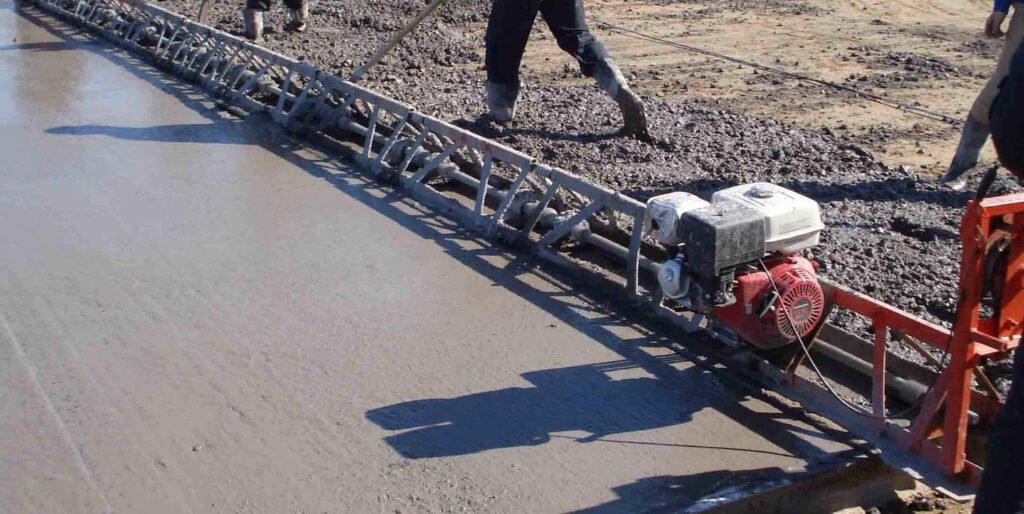
PPC is suitable for high-durability projects such as large-volume concrete (bridge piers, dam bodies), hydraulic engineering, offshore structures (breakwaters, docks), sewage tanks, underground structures, and environmental protection facilities. OPC is more suitable for precast components requiring high early strength, repair projects, or low-temperature, rapid-setting applications.
- OPC is suitable for projects requiring high early strength, such as precast bridge beams, highway pavements, and emergency repair projects.
- PPC is suitable for large-volume concrete projects (such as dams and basements), water conservancy projects, coastal projects, and other applications requiring high hydration heat and durability.
8. Setting Time
OPC has an initial setting time of approximately 30 minutes and a final setting time of approximately 280 minutes. PPC has a similar initial setting time but a final setting time of approximately 600 minutes, making it suitable for long-duration construction environments.
- OPC has an initial setting time of approximately 1-3 hours and a final setting time of approximately 5-10 hours. It sets quickly and is prone to premature setting in high-temperature environments.
- PPC has an initial setting time of approximately 3-5 hours and a final setting time of approximately 10-15 hours. Its longer setting time makes it suitable for construction in hot weather and long-distance transportation.
9. Fineness
OPC has a specific surface area of approximately 225 m²/kg; PPC has a higher surface area of approximately 300 m²/kg, which increases reactivity, improves density, and improves impermeability.
- OPC typically has a specific surface area of 300-350 m²/kg and moderate fineness. Its strength is primarily achieved through hydration of the clinker particles.
- PPC typically has a specific surface area of 350-400 m²/kg and finer fineness. By increasing the specific surface area of the mixed materials, it promotes pozzolanic reactions and improves later performance.
10. Workability
PPC's fine powder interacts with fly ash to enhance mortar workability and fluidity, resulting in superior pouring and pumping performance compared to OPC concrete.
- OPC concrete mixes have average water retention and are prone to segregation and bleeding. The water-cement ratio must be strictly controlled to ensure workability.
- PPC concrete, due to its mixed material particle shape (e.g., spherical fly ash particles) and high fine powder content, offers improved water retention, flowability, workability, and construction adaptability.
11. Resistance Against Chemical Attack
PPC has a lower Ca(OH)₂ content and a dense structure, effectively resisting sulfate, chloride, and alkaline corrosion. OPC, on the other hand, is susceptible to calcium hydroxide dissolution and steel bar corrosion.
- OPC has a high content of tricalcium silicate (C3A), which reacts easily with sulfates and acids to form expansive products, resulting in weak chemical attack resistance.
- PPC has a low C3A content, and the mixed materials consume calcium hydroxide (Ca(OH)₂), reducing susceptible components. Its resistance to sulfate and acid attack is significantly superior to OPC.
12. Concrete Density
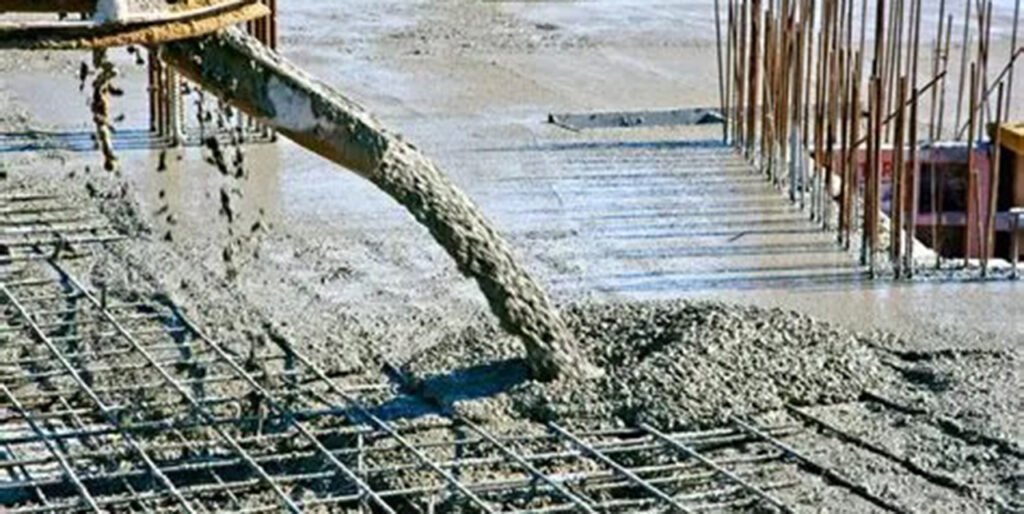
PPC has a low capillary porosity and a significantly lower capillary water absorption coefficient than OPC. Bleeding is virtually nonexistent, improving surface density and finish quality.
- OPC concrete has a slightly higher density, typically 2400-2500 kg/m³, due to the higher bulk density of the clinker hydration products.
- PPC concrete has a slightly lower density, approximately 2350-2450 kg/m³, due to the looser but more uniform structure of the hydration products produced by the reaction of the mixed materials.
13. Chloride Penetration Resistance
Experiments have shown that the chloride ion migration coefficient of PPC is only approximately 0.3 to 0.5 times that of OPC, resulting in a significantly lower penetration depth.
- OPC concrete has a high porosity (approximately 15%-20%) and large pore sizes, allowing chloride ions to easily penetrate and increasing the risk of steel corrosion.
- PPC concrete refines its pores due to the reaction of mixed materials (increasing the proportion of pores <50 nm), reducing its porosity to 10%-15% and improving its chloride ion penetration resistance by 30%-50%.
14. Drying Shrinkage & Carbonation Depth
Due to the high filling capacity of fly ash, PPC has a low drying shrinkage rate and a reduced risk of cracking. While its carbonation depth may be slightly higher than that of OPC, its denser structure and lower Ca(OH)₂ content allow the actual carbonization rate to be controlled through curing, resulting in overall good carbonation resistance.
- OPC concrete has significant drying shrinkage, with a 28-day drying shrinkage rate of approximately 300-400×10⁻⁶, which can easily cause surface cracks.
- PPC concrete has less drying shrinkage, with a 28-day drying shrinkage rate of approximately 200-300×10⁻⁶. Because the mixed materials improve the interfacial transition zone, it offers improved volume stability.
15. Abrasion Resistance
Due to its higher early hardness, OPC's wear resistance is slightly better initially; however, after long-term hardening, PPC's performance gradually approaches or even exceeds that of OPC.
- OPC exhibits high early strength and good surface wear resistance, but after 28 days, wear resistance increases slowly, resulting in limited improvement in long-term wear resistance.
- PPC's long-term strength continues to increase, and its concrete structure is denser. Its wear resistance significantly improves with age, and after 6 months, its wear resistance is 10%-20% higher than comparable OPC grades.
16. Performance in Hot/Cold Weather
PPC exhibits excellent crack resistance in hot environments. However, in cold environments, its slow early strength development requires a longer curing period. OPC, on the other hand, is suitable for rapid construction and has a faster response in cold weather.
- OPC's setting time is shortened by 30%-50% at high temperatures (>30°C), making it prone to false setting. At low temperatures (<5°C), it hardens slowly, resulting in insufficient early strength.
- PPC's setting time at high temperatures is 20%-30% longer than that of OPC, making it more adaptable to construction. While it also hardens slowly at low temperatures, its lower hydration heat reduces the risk of freeze-thaw damage.
17. Pozzolanic Activity Index
PPC performance depends on fly ash activity. High-quality active fly ash can significantly improve long-term strength and compactness, while low-activity fly ash may weaken performance and requires strict testing and control.
- OPC has almost no pozzolanic activity, and its strength depends primarily on clinker hydration. Its 28-day pozzolanic activity index is close to 0.
- PPC, due to its inclusion of fly ash, slag, and other mixed materials, has a high pozzolanic activity index. The 28-day activity index is typically ≥75%, reaching over 90% by 90 days, and the reaction continuously increases strength.
18. Creep and Shrinkage Over Time
PPC has slightly higher creep than OPC, so long-term deformation needs to be considered in design. However, its lower drying shrinkage and greater volume stability make it suitable for long-term structural use.
- OPC concrete exhibits significant long-term creep (a one-year creep coefficient of approximately 2.5-3.0) and prolonged shrinkage (a one-year shrinkage rate of up to 400×10⁻⁶), significantly impacting structural deformation.
- PPC concrete exhibits minimal long-term creep (a one-year creep coefficient of approximately 2.0-2.5) and a short shrinkage duration (a one-year shrinkage rate of approximately 300×10⁻⁶), resulting in superior long-term structural stability.
19. Pumping Performance
PPC has good flowability and low friction, reducing the risk of pipe blockage during pumping and making long-distance and high-rise pumping more reliable. OPC concrete requires admixtures to improve pumpability.
- OPC concrete maintains fluidity for a short time (approximately 1-2 hours) and is prone to pipe blockage during pumping due to large slump loss, making it suitable for short-distance pumping.
- PPC concrete maintains fluidity for a long time (approximately 2-3 hours), has good water retention, and is highly pumpable, making it suitable for long-distance (>1000 meters) and high-lift (>50 meters) pumping.
20. Admixture Compatibility
OPC has proven compatibility with water reducers, retarders, and other additives. Fly ash in PPC affects admixture activity, so a trial mix is required before construction to ensure stable setting time and performance.
- OPC has average compatibility with admixtures such as water reducers. Due to the high free calcium content in the clinker, it easily adsorbs admixtures, requiring precise control of the admixture dosage to prevent excessive slump loss.
- PPC, due to its more stable surface adsorption of admixture materials (such as fly ash), offers better compatibility with admixtures, allowing for flexible adjustment of admixture dosage, resulting in minimal slump loss and greater adaptability.
21. Grades available
In terms of cement grading, OPC (ordinary Portland cement) has a clear strength classification. According to Indian BIS standards (i.e., IS 269, IS 8112, and IS 12269), OPC is generally divided into three grades: 33, 43, and 53, corresponding to 28-day compressive strengths of at least 33 MPa, 43 MPa, and 53 MPa, respectively. OPC 33 is primarily used for ordinary masonry, plastering, and non-load-bearing structures; OPC 43 is widely used for medium-strength concrete components such as floor slabs, foundations, beams, and columns; and OPC 53, due to its high early strength, is often used in high-strength concrete, prestressed components, industrial flooring, and fast-paced construction projects. The grading of OPC facilitates quality control and concrete mix design. In contrast, PPC (pozzolanic cement) is not categorized by strength grade in the standards. According to IS 1489 (Part 1), PPC is a blended cement with a minimum compressive strength requirement of 33 MPa after 28 days, comparable to OPC Grade 33. However, because the pozzolans (such as fly ash) it contains react with hydration to form an additional gel (C-S-H) bond, making the concrete denser and more durable, PPC's strength growth rate is slower. However, its long-term strength (e.g., 90 days and above) often approaches or even exceeds that of OPC Grade 53. For this reason, although PPC is not factory-labeled as Grade 43 or 53, in actual construction, its later-stage strength properties meet the requirements of higher-grade OPC cements, making it particularly suitable for projects requiring long-term structural durability. Furthermore, when using the ASTM (American Society for Testing and Materials) or EN (European Standards) systems, the grades and types of OPC and PPC differ. For example, in ASTM C150, OPC corresponds to Type I (general purpose), Type II (medium sulfate resistance), and Type III (high early strength), while PPC corresponds to Type IP (cement with fly ash) or Type IS (cement with blast furnace slag) in ASTM C595. These classifications are based more on performance than just strength grade.
- Common OPC grades include 32.5, 42.5, 52.5, and 62.5. High-strength grades (52.5 and above) are in ample supply and can meet the needs of high-load projects.
- The main PPC grades are 32.5 and 42.5. Due to mixed material limitations, high-strength grades of 52.5 and above are relatively rare, limiting their application.
22. Bleeding tendency
- OPC concrete is highly bleedable, easily forming a 2-5mm laitance layer on its surface, which affects surface strength and wear resistance and requires secondary finishing.
- PPC concrete, due to its high fine particle content, offers excellent water retention and low bleed volume. The laitance layer is typically less than 1mm thick, resulting in more uniform overall concrete quality.
23. Benefits
- OPC's core advantages are high early strength and rapid hardening, making it suitable for emergency construction and rapid load-bearing requirements.
- PPC's advantages include low heat of hydration, excellent durability, low cost, and the recycling of industrial waste, aligning with the trend toward green building.
24. Early Strength
- OPC's 7-day compressive strength can reach 60%-70% of its 28-day strength, offering significant early strength advantages and allowing it to quickly reach demolding strength.
- PPC's 7-day compressive strength is only 50%-60% of its 28-day strength, resulting in lower early strength and requiring a longer curing period to meet load-bearing requirements.
25. Environmental Friendliness
- OPC production generates high carbon emissions and consumes significant energy, as well as consuming a large amount of limestone resources, significantly impacting the ecological environment.
- PPC reduces clinker usage, lowering resource consumption and carbon emissions. It also absorbs industrial waste (e.g., fly ash, which can reach tens of millions of tons annually), making it a more environmentally friendly cement type.
26. Alkali-Aggregate Reaction
- OPC has a high alkali content (typically 0.6%-1.0%). If reactive aggregates (such as siliceous aggregate) are used, an alkali-aggregate reaction is likely to occur, leading to concrete cracking.
- PPC admixtures (such as fly ash) can absorb some alkali, reducing the concrete's alkali content (typically 0.4%-0.7%) and effectively inhibiting the alkali-aggregate reaction.
27. Sulphate Resistance
- OPC has a high C3A content (5%-10%), which reacts with sulfate to form ettringite. This volume expansion can easily cause cracking, resulting in a low-medium sulfate resistance rating.
- PPC has a low C3A content (usually <5%), and the pozzolanic reaction consumes Ca(OH)₂, reducing sulfate reaction products, resulting in a high sulfate resistance rating.
28. Heat Generation
- OPC's hydration heat peaks early (1-3 days) and has a high peak temperature. Temperatures within large concrete volumes can reach 60-70°C, making it susceptible to temperature stress cracking.
- PPC's hydration heat peaks later (3-7 days) and has a lower peak temperature, 10-15°C lower than comparable OPC grades. This makes temperature control easier for large concrete volumes.
29. Carbonation Depth
- OPC concrete carbonates rapidly, reaching a carbonation depth of 10-20mm after 5 years. Carbonation reduces alkalinity (pH < 10), easily damaging the steel reinforcement film.
- PPC concrete has a high density and a low CO₂ diffusion coefficient. Its carbonation depth is only 5-15mm after 5 years, resulting in a slow carbonation rate and superior long-term protection for steel reinforcement.
Which is better, OPC or PPC cement?
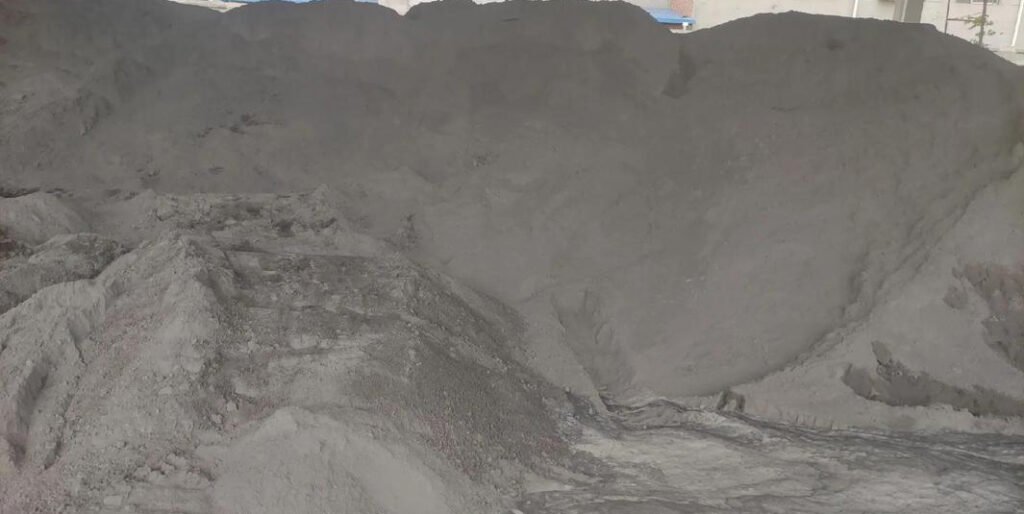
Conclusion: OPC is recognized for quick setting and early strength, but PPC is better for long-term durability and resistance to environmental factors. As a cement machinery manufacturer this is our suggestion: If the project is urgent, such as emergency repairs, prefabricated components that need to be quickly removed, or construction in low-temperature environments, OPC is more suitable because it quickly builds strength in the early stages, can meet load-bearing requirements as soon as possible, and reduce the risks caused by insufficient strength. However, if it is a large-volume concrete project, such as a dam or large foundation, or the project is in a humid, corrosive environment like an underground tunnel or coastal building, PPC has more obvious advantages. It has a low heat of hydration, which can avoid cracks caused by large temperature differences, and has better durability in the later stages, strong impermeability and corrosion resistance, and is also less expensive.
Can I use OPC and PPC cement together?
The answer is Yes while not commonly mixed togehter, Ordinary Portland cement (OPC) and Portland Pozzolana cement (PPC) can be mixed, but in actual application, they need to be operated with caution in combination with specific engineering requirements and usage conditions to ensure that the various properties of the concrete meet the design standards.
| Item | OPC (Ordinary Portland Cement) | PPC (Portland Pozzolana Cement) |
| Main Components | Predominantly Portland clinker (proportion ≥ 80%), with a small amount of gypsum | Portland clinker (50%-80%) + pozzolanic materials (such as slag, fly ash, etc., 20%-50%) + gypsum |
| Strength Development | High early strength, fast setting and hardening | Relatively low early strength, significant later strength growth (strength can approach or reach the level of OPC after 28 days) |
| Hydration Heat | Relatively high | Relatively low (due to the reduced proportion of clinker by pozzolanic materials) |
| Durability | Moderate sulfate resistance, average crack resistance | Better sulfate resistance and impermeability, smaller dry shrinkage (improved by pozzolanic materials) |
| Applicable Scenarios | Emergency projects, structures with high strength requirements (e.g., bridges, high-rise buildings) | Mass concrete, projects in humid environments (e.g., underground structures, water conservancy projects) |
There are some key differences between the two. OPC is primarily composed of silicate clinker, accounting for no less than 80%. It offers high early strength and rapid setting and hardening, but also has a high heat of hydration and relatively average sulfate and crack resistance. It is suitable for emergency projects and high-strength structures such as bridges and high-rise buildings. PPC, on the other hand, contains 50%-80% silicate clinker and 20%-50% mixed materials such as slag and fly ash. It exhibits lower early strength but significant strength growth later in life. It also has a lower heat of hydration, better sulfate and impermeability resistance, and less shrinkage. It is more suitable for large-volume concrete and projects in humid environments such as underground structures and water conservancy projects.
Why combine PPC and OPC together? What are the adventages?
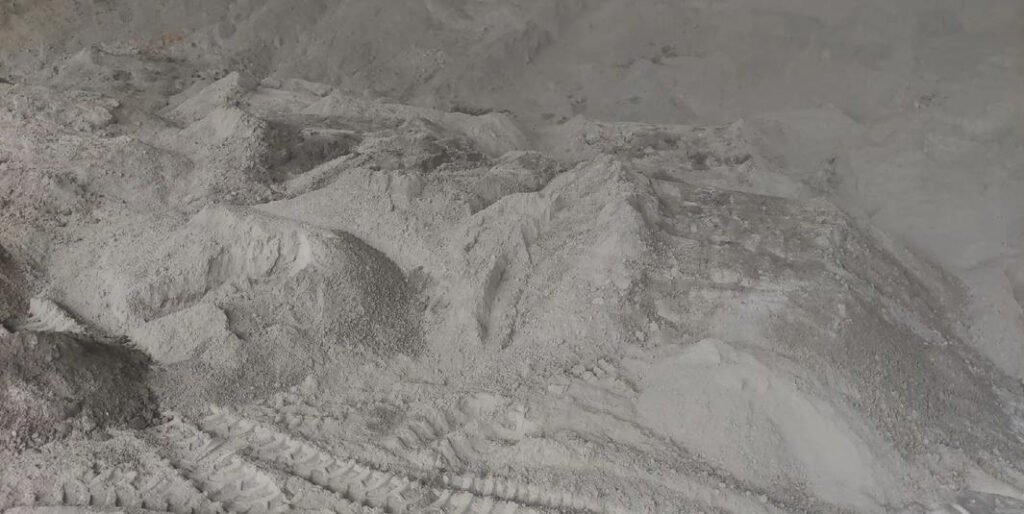
Combining the two can, to a certain extent, achieve complementary performance. OPC's high early strength can offset PPC's insufficient early strength, while PPC's low heat of hydration and excellent durability can mitigate OPC's tendency to crack in large-scale projects. For example, in projects such as large-scale foundation pouring, where both early strength and crack resistance are crucial, a balanced combination can achieve a balance between the advantages of both. At the same time, this mixing method can also achieve cost optimization. Because PPC has a lower mixed material cost, mixing it with OPC can reduce the overall material cost while ensuring performance, and can improve adaptability to complex environments. By adjusting the mixing ratio, it can meet the needs of specific scenarios such as strength requirements and anti-seepage and sulfate resistance.
Precautions for Mixing OPC and PPC Cement
There are several precautions when mixing. First, the ratio must be carefully controlled. The optimal mixing ratio requires testing to determine the optimal ratio. Generally, a PPC ratio of no more than 50% is recommended. The specific ratio should be adjusted based on the project's design strength and curing conditions to avoid performance fluctuations caused by an inappropriate ratio. Secondly, ensuring uniform mixing is crucial. Because the density and fineness of the two cements may differ, the mixing time should be extended to ensure even dispersion. Regarding curing, the hydration reaction of the mixed cement is significantly affected by temperature and humidity, requiring intensive curing, especially early moisturization, to ensure later strength development. Furthermore, if used with admixtures, compatibility must be verified through pre-testing to prevent admixture failure. Avoid mixing with other types of cement, such as aluminate cement, to prevent chemical reactions. Furthermore, caution is advised for projects requiring extremely high early strength or in special environments, such as those in extremely cold regions, and appropriate additives should be used as necessary.
When to Use PPC Cement
To answer this question we need to know that the situations that ppc is not suitable: PPC is not suitable for applications with high early strength requirements (such as emergency repair projects), construction in low temperature environments (prone to freezing damage due to slow setting), or with poor compatibility with certain admixtures. Other than that PPC is your best choice for:
Large-volume concrete projects
Large-volume concrete projects are ideal for PPC. Because PPC contains a high proportion of fly ash and slag in its blend, and a low clinker content, its early hydration reaction is gentle, releasing far less heat of hydration than ordinary Portland cement (OPC). This characteristic effectively reduces thermal cracking caused by large temperature differences between the interior and exterior of large-volume concrete structures, such as dams, large foundations, and bridge piers, significantly improving the structural integrity and durability.
Projects with High Durability Requirements
PPC is the preferred choice for projects with high durability requirements. Fly ash and slag in the concrete mix generate more calcium silicate hydrate (C-S-H) gel during secondary hydration, filling the concrete's internal pores and making the structure denser, thereby improving impermeability, sulfate attack resistance, and carbonation resistance. Therefore, PPC is suitable for underground projects like tunnels and basements, hydraulic projects like canals and reservoirs, and projects in humid or corrosive environments like coastal buildings and sewage treatment plants.
Projects that allow for longer curing periods
Third, PPC can be considered for projects that require controlled construction schedules or have more relaxed curing conditions. Although PPC's early strength development is slower, its later strength continues to grow and its stability is relatively good, making it suitable for projects with less urgent construction deadlines and a longer curing period. Furthermore, its longer setting time reduces quality issues caused by insufficient construction time. It is particularly suitable for large-scale pouring or construction in hot summer environments, providing more time for concrete vibration and smoothing.
Load-bearing structures that prioritize long-term performance over early-stage strength requirements
PPC is used in non-critical load-bearing structures such as walls and floor slabs in civil buildings. These structures don't require high early-stage strength, prioritizing long-term performance and affordability. PPC is generally less expensive than OPC due to lower raw material costs and exhibits less shrinkage, reducing shrinkage-related cracking in walls and floor slabs and improving the building's appearance and service life.
Projects with High Energy and Emission Reduction Requirements
Finally, projects with high energy and emission reduction requirements tend to choose PPC. The addition of mixed materials during PPC production reduces the amount of cement clinker used, which is the primary source of carbon emissions in the cement industry. Therefore, the PPC production process is more environmentally friendly and lowers carbon emissions, meeting the requirements of green building and sustainable development. It is particularly suitable for projects with strict environmental regulations.
Why does PPC cement take longer to set than OPC?
In conclusion PPC sets more slowly than OPC due to a combination of factors, including dilution of the clinker by the admixture, delayed hydration due to differences in reactivity, physical barriers, and a lower heat of hydration. This characteristic also makes PPC more suitable for large-volume concrete projects, reducing the risk of cracking caused by concentrated heat of hydration. The specific reasons are as follows:
Clinker Content and Activity Differences
First, the core reason lies in the differences in clinker content and activity. Silicate clinker (primarily composed of tricalcium silicate (C3S), dicalcium silicate (C2S), tricalcium aluminate (C3A), and tetracalcium aluminoferrite (C4AF)) accounts for over 80% of OPC. C3S and C3A are key components that determine early strength and setting speed. C3S hydrates rapidly, rapidly releasing hydration products and forming structure; C3A hydrates extremely quickly, significantly accelerating setting. In contrast, clinker in PPC only accounts for 50%-80%, with the remaining 20%-50% consisting of mixed materials such as fly ash, slag, and pozzolanic materials. These mixed materials inherently have low hydration activity, especially fly ash and other pozzolanic materials, which rely on calcium hydroxide (Ca(OH)₂) generated by cement hydration for secondary hydration. The initiation and progression of secondary hydration are much slower than direct clinker hydration, thus slowing the setting process overall.
Physical Effects of Mixed Materials
The physical effects of mixed materials can also affect setting speed. Mixed materials (such as fly ash) are typically fine-particle and smooth-surfaced, creating a "dilution" and "barrier" effect between cement particles. On the one hand, they reduce the amount of active clinker per unit volume, lowering the "concentration" of the hydration reaction. On the other hand, some mixed material particles adsorb onto the surface of clinker particles, temporarily blocking their contact with water and delaying the onset of the hydration reaction. Furthermore, some mixed materials (such as slag) require a highly alkaline environment for efficient hydration. However, alkaline conditions are not fully established during the early hydration stages, further slowing the overall reaction rate.
Differential Hydration Product Formation Rates
Differential hydration product formation rates lead to delayed setting. Hydration of OPC clinker rapidly produces large amounts of products such as hydrated calcium silicate (C-S-H gel) and calcium hydroxide. These products rapidly fill the intergranular spaces, forming a cohesive structure, causing the cement paste to quickly lose fluidity and set. In PPC, however, due to the presence of mixed materials, the amount of early hydration products produced is smaller and slower. A portion of the Ca(OH)₂ generated by clinker hydration is used to stimulate secondary hydration in the mixed materials, slowing the accumulation of structural products such as C-S-H gel. Consequently, the slurry takes longer to reach the structural strength required for setting.
The Impact of Hydration Heat
The impact of hydration heat cannot be ignored. Due to the high clinker content in OPC, the early hydration reaction is intense, releasing a significant amount of hydration heat. Higher temperatures accelerate the hydration reaction and further promote setting. In contrast, PPC's mixed materials have a lower clinker content, resulting in less early hydration heat release and a less significant temperature rise. The hydration reaction lacks a "thermal driver," resulting in a slower rate and a correspondingly longer setting time.
What are the disadvantages limitations of PPC cement?
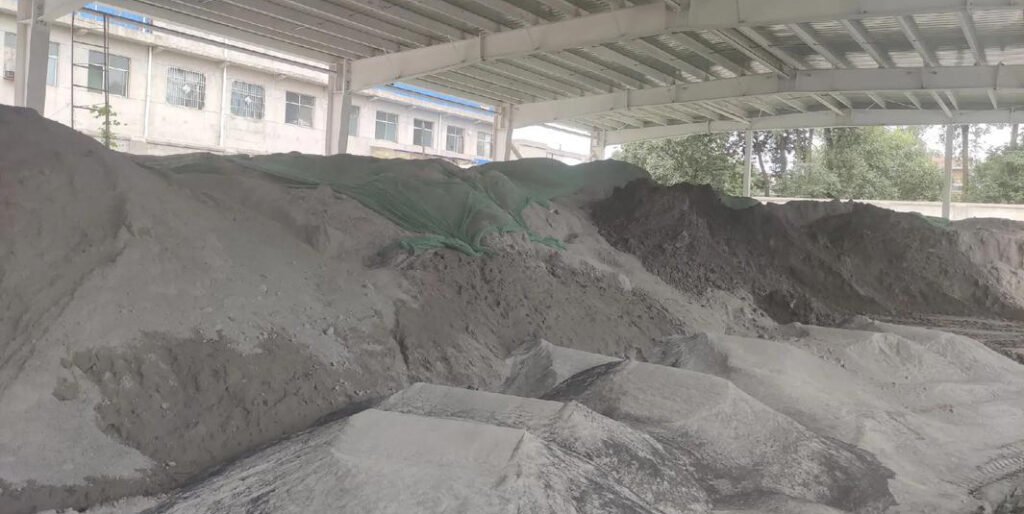
While PPC cement has many advantages, it also has certain limitations.
Slow early strength development
First, its slow early strength development is one of its most prominent disadvantages. Because its clinker content is lower than that of ordinary Portland cement (OPC), and because mixed materials like fly ash and slag have lower hydration activity, secondary hydration relies on calcium hydroxide generated by clinker hydration. Consequently, its strength growth is slow during the first three to seven days. This results in insufficient initial bearing capacity after pouring. For emergency repairs, winter construction, or projects with stringent early strength requirements, such as fast-traffic pavements and high-strength precast components, this can extend the curing period and impact construction progress.
Increased risk of rebar corrosion
The addition of admixtures (such as fly ash and slag) to PPC reduces the alkalinity of the cement paste. In a highly alkaline environment (typically a pH ≥ 12.5), rebar forms a passive film that effectively prevents corrosion. However, when the alkalinity decreases, this passive film may be destroyed, making the rebar more susceptible to attack by moisture, oxygen, and chloride ions in the surrounding environment. This in turn causes corrosion, compromising the durability and safety of the structure.
Longer setting time
Secondly, the setting time is longer and more affected by environmental conditions. PPC sets slower than OPC. If used in low-temperature, high-humidity, or poorly ventilated environments, the hydration reaction will be further delayed, potentially leaving the concrete surface in a plastic state for extended periods, increasing the risk of bleeding and sanding, and even hindering subsequent processes such as finishing and demolding. In extremely cold regions, slow setting can lead to frost damage if effective insulation measures are not implemented.
High Curing Requirements
Third, PPC has even higher requirements for curing conditions. The later strength development of PPC depends on sufficient hydration, while the secondary hydration of the mix requires consistent humidity and a suitable temperature. Improper curing (e.g., insufficient early moisturizing or infrequent watering) can lead to incomplete cement hydration, reducing not only the ultimate strength but also cracking due to increased shrinkage, impacting the concrete's impermeability and durability. In contrast, OPC is less sensitive to curing conditions, making it easier to maintain basic performance under the same conditions.
Poor compatibility with admixtures
Fourth, compatibility with certain admixtures may be poor. The complex composition of PPC's mixed materials, such as the carbon content of fly ash and the varying fineness of slag, may affect its compatibility with admixtures such as water reducers and retarders. For example, carbon particles in some fly ash can adsorb water reducers, reducing their water-reducing effect and requiring increased admixture dosage to achieve the desired flowability. This not only increases costs but can also lead to problems such as excessive retarding and reduced strength due to excessive admixture dosage.
Performance is limited in dry environments.
Finally, performance may be limited in dry environments. While PPC generally has less shrinkage than OPC, in chronically dry environments (such as high-temperature, highly ventilated buildings), rapid water evaporation can inhibit hydration, leading to insufficient strength development and an increased risk of shrinkage cracking. Furthermore, if the mix contains a high concentration of pozzolanic components, their activity will be limited in the absence of sufficient moisture, potentially affecting the density of the concrete.
Premature formwork removal is not possible
Premature formwork removal poses safety risks: Because PPC takes longer to harden than OPC, premature formwork removal may result in insufficient concrete strength to withstand its own weight or construction loads. This can lead to structural deformation, cracking, or even collapse, posing a significant safety hazard. This can extend formwork turnover, indirectly impacting construction schedules and cost control.
Longer setting and maturation times
Compared to ordinary Portland cement (OPC), PPC sets more slowly and takes longer to fully mature (reach design strength). This not only delays subsequent construction steps (such as finishing and backfilling), but also increases the risk that the immature concrete will be damaged by external factors (such as inclement weather and mechanical impact) during this period, increasing project quality risks.
FAQ: Frequently Asked Question About PPC Cement:
OPC (Ordinary Portland Cement) is primarily clinker-based, offering high early strength and a high heat of hydration, making it suitable for general projects. PPC (Pozzolanic Portland Cement) incorporates pozzolanic materials, resulting in significant late-stage strength gains, low heat of hydration, reduced shrinkage, and excellent corrosion resistance. PSC (Slag Portland Cement) incorporates granulated blast furnace slag, offering excellent heat resistance and impermeability, but with lower early strength. It is suitable for large-scale projects and humid environments. The key differences between the three lie in the type of admixtures and their performance.
PPC cement should be stored moisture-proof in a dry, well-ventilated warehouse with a floor at least 30cm above ground level and covered with moisture-proof material. Bags should not be stacked more than 10 bags high and 5-6 bags wide, leaving space for aisles. The storage period should not exceed 3 months; strength testing is required after this period. When stored outdoors, the cement should be covered tightly with rainproof cloth to prevent moisture absorption and clumping that could affect performance.
Gypsum plays a primary role in retarding the setting of PPC cement, regulating its setting time. It slows down the rapid hydration of tricalcium aluminate in the cement clinker, preventing rapid setting and ensuring an initial setting of 30 minutes or longer and a final setting of 600 minutes or shorter, leaving ample time for construction. Furthermore, gypsum reacts with tricalcium aluminate to form ettringite, which participates in cement hardening and improves early strength development without affecting the later reactions of the pozzolanic material. This makes it a key component in ensuring the performance of PPC.
PPC concrete is made by mixing PPC cement with aggregates (sand and stone), water, and appropriate admixtures in appropriate proportions. First, the PPC cement (containing Portland cement clinker, pozzolanic admixture, and gypsum) is dry-mixed with sand and stone. Water and admixtures are then added and stirred into a homogeneous slurry, ensuring the aggregates are fully coated. After mixing, the mixture is poured, vibrated, and cured. The cement hydration and pozzolanic reactions create a hardened structure that combines strength and durability.
Water is very important in concrete for several reasons. It starts a chemical reaction called hydration between water and cement. This reaction creates a gel that holds the concrete together and gives it strength. Water also makes the mixture easy to work with—it helps the concrete flow, fill molds, and surround metal bars (rebar) before it hardens. It stops the concrete from getting hard too quickly, so workers have time to shape it. And even after it starts to harden, water helps the concrete get stronger and last longer as the hydration continues. Without water, concrete would just be a dry mix that can’t hold together.
OPC (Ordinary Portland Cement) is classified into three grades: 33, 43, and 53, based on its 28-day compressive strength. These numbers represent the minimum compressive strength per square millimeter (MPa) after 28 days of curing. Grade 33 OPC is primarily used in non-structural or foundational construction projects, such as small residential buildings, road bases, and brickwork. Its slow strength growth but stable long-term performance make it suitable for projects with low strength requirements. Grade 43 OPC is the most widely used grade and is suitable for structures with medium strength requirements, such as general residential and commercial buildings, bridge piers, pavements, and concrete pipes. It exhibits good early strength and workability. Grade 53 OPC is used in projects with extremely high strength requirements, such as bridges, high-rise buildings, dams, and prestressed components. Its rapid early strength development can shorten construction cycles and improve the early bearing capacity of structures, but it also produces a high heat of hydration, requiring careful curing to prevent cracking.
Yes, PPC cement (Portland Pozzolana Cement) is generally more durable than traditional Ordinary Portland Cement (OPC). This is primarily due to the secondary reaction between the pozzolanic materials (such as fly ash) contained in it and the calcium hydroxide produced by cement hydration, forming more C-S-H gel. This results in a denser and more impermeable concrete structure. This dense structure not only reduces the penetration of harmful substances (such as chloride ions and sulfates), but also significantly improves the concrete's resistance to corrosive environments, slowing the corrosion of steel bars. Therefore, PPC cement often exhibits superior durability compared to traditional OPC in long-term use and in humid or corrosive environments.
PPC cement is ideally suited for the following types of projects: First, in water conservancy projects such as dams, aqueducts, spillways, and reservoirs, PPC's excellent impermeability and resistance to sulfate attack effectively extend the service life of structures. Second, in marine and port projects such as docks, piers, breakwaters, and coastal bridges, PPC resists chloride ion attack from seawater, protecting rebar from corrosion. Furthermore, in large-volume concrete projects (such as high-rise building foundations, underground garages, and large bridge abutments), PPC's low hydration heat reduces the risk of thermal cracking. Fourth, in municipal and environmental protection projects, such as sewage treatment plants, landfill concrete structures, and sewer segments, PPC offers strong corrosion resistance and more stable performance. Finally, in rural infrastructure construction (such as rural housing, well enclosures, and rural roads), PPC's high cost-effectiveness and wide adaptability make it an ideal material for widespread use.
PPC (Portland Pozzolana Cement) is better for long-term strength than OPC (Ordinary Portland Cement). This is because PPC includes pozzolanic materials like fly ash, which react slowly with byproducts of cement hydration over time, creating more binding compounds that make the concrete stronger and more durable in the long run. OPC gains strength faster initially, but PPC keeps getting stronger over years, making it better for long-term use.
PPC cement is cheaper than OPC because it uses pozzolanic materials like fly ash, which are industrial byproducts (like waste from coal plants) and cost much less than the clinker used in OPC. OPC is made mostly from clinker, which requires more energy and resources to produce, making it more expensive. Since PPC replaces a part of the costly clinker with cheap, recycled pozzolanic materials, its overall production cost is lower, so it sells for less.
Pozzolana is a natural or artificial material rich in reactive silica. While it is not cementitious by itself, when finely ground and combined with calcium hydroxide at ambient temperatures, it undergoes a chemical reaction that forms calcium silicate compounds with cement-like binding properties.
Portland Pozzolana Cement (PPC) is a type of blended cement composed of 15–35% pozzolanic material (such as fly ash or calcined clay), around 4% gypsum, and the remainder is clinker. According to BIS (Bureau of Indian Standards), PPC is comparable to 33-grade cement in terms of strength classification. The pozzolanic material in PPC chemically reacts with the calcium hydroxide released during the hydration of clinker to form additional cementitious compounds (primarily calcium silicate hydrate). This reaction results in a denser, more impermeable concrete structure with improved durability. PPC is highly suitable for applications requiring enhanced resistance to moisture and chemical attack, such as hydraulic structures, marine constructions, mass concreting, and foundations. It also helps protect concrete from alkali-aggregate reactions. As per BIS specifications, PPC must achieve a minimum 28-day compressive strength of 33 MPa. It is also well-suited for general construction work, including masonry mortar, plastering, and non-structural applications due to its good workability and surface finish.
In India, coal-fired power plants are widely distributed, providing a stable supply of high-quality fly ash. This facilitates the large-scale production of fly ash-based PPC (Portland Pozzolana Cement). Fly ash, an artificial pozzolan material, exhibits excellent reactivity, is inexpensive, and widely available, making it a prime example of resourceful utilization of industrial byproducts. In contrast, calcined clay-based PPC is not only energy-intensive to produce, but also complex raw material processing and an unstable supply chain, leading to its gradual decline in market competition. As fly ash-based PPC continues to improve its performance, it has demonstrated greater cost-effectiveness and environmental friendliness in practical engineering applications, making it a mainstream product in the Indian cement industry.
Due to its material composition and fineness, PPC improves concrete workability, enabling more uniform mixing and smoother pumping. It is particularly suitable for projects requiring complex placements or high workability. Furthermore, PPC can significantly reduce concrete bleeding and aggregate segregation, effectively improving the homogeneity and density of the finished structure. During hydration, due to the slow reaction of fly ash, PPC releases less heat of hydration than ordinary Portland cement, making it particularly suitable for large-volume concrete (such as dams, foundations, and bridge piers), effectively reducing the risk of thermal cracking. Furthermore, PPC exhibits enhanced resistance to corrosive media such as sulfates and chlorides, slowing the corrosion of steel reinforcement within concrete and enhancing the durability of the structure. It also improves the concrete's impermeability and water resistance by reducing the leaching rate of calcium hydroxide.
According to the Indian Standard (BIS), PPC should have a minimum compressive strength of 33 MPa (330 kg/cm²) at 28 days, equivalent to traditional "Grade 33 cement." While PPC's early strength is slightly lower than that of OPC Grades 43 or 53, it exhibits superior late-stage strength growth. This is because the pozzolanic materials (such as fly ash) in PPC undergo a secondary reaction with the calcium hydroxide (Ca(OH)₂) released by Portland cement during hydration, forming additional cementitious materials (such as C-S-H gel). This gel further fills the concrete's capillary pores, increasing its density and later-stage strength. This late-stage strengthening mechanism enables PPC to exhibit more stable and durable performance compared to OPC under long-term loads and in harsh environments.
PPC can be produced using two basic processes: The combined grinding process involves grinding Portland cement clinker, gypsum, and fly ash in appropriate proportions to produce a homogenized finished cement. The post-mixing process involves producing OPC cement and fly ash separately and then mechanically mixing them to form PPC. According to IS:1489, the fly ash content in PPC ranges from 15% to 35%, with 15% being the minimum and 35% being the maximum. Fly ash used in PPC production must meet the technical requirements of IS:3812 (Part I)-2003, including chemical composition, loss on ignition, specific surface area, and particle fineness. Using an appropriate fly ash content not only reduces costs but also improves concrete performance. However, it must be scientifically proportioned according to specific project requirements and environmental conditions to ensure the final quality and stability of the cement.
Due to the source and type of pozzolans (especially fly ash) it contains, PPC's apparent color may differ from that of ordinary Portland cement (OPC). Common color variations include light gray, dark gray, brownish, or yellowish gray. This color variation is primarily due to two factors:
C₄AF (tricalcium aluminum ferrite) content: The higher the C₄AF content, the darker the cement color.
The color of the fly ash itself: This depends on the coal combustion temperature, type of coal, and combustion process; some fly ashes are darker, while others are lighter.
However, it is important to emphasize that cement color has no direct correlation with its performance. There is a misconception in the market that "white color equals good quality," which is inaccurate. Cement properties (such as strength, setting time, and stability) should be determined through standard laboratory testing rather than relying solely on visual inspection of color.
Therefore, color variation is normal and acceptable for PPC, OPC, or other types of cement and does not affect its structural function or performance.
Portland Pozzolana Cement (PPC) is produced through two main processes: one involves inter-grinding high-quality clinker with well-balanced chemical composition, fly ash rich in highly reactive silica, and high-purity gypsum free of harmful substances; the other entails blending high-quality Ordinary Portland Cement with fine fly ash that contains a high level of reactive silica. In both methods, these materials are carefully proportioned to ensure the cement achieves enhanced quality characteristics.
PPC cement, due to its fine particle nature, increases the volume of paste in concrete, thereby enhancing the bond between concrete and steel reinforcement. During initial hydration, it releases lime, which helps reduce voids in the concrete structure and lowers permeability—greatly boosting durability. Additionally, PPC inhibits the formation and growth of micro-cracks in the structure, contributing to increased overall strength.
The grade of cement reflects its strength, with compressive strength being the primary measure. It’s important to check cement grades before purchase as they significantly affect structural strength. Unlike OPC cement, which has defined grades (e.g., 33, 43, 53), PPC cement does not have specific graded classifications. However, its strength is generally considered equivalent to OPC 33 grade cement, with a grade strength of 330 kg per square centimeter.
Ordinary Portland Cement (OPC) and Portland Pozzolana Cement (PPC) differ in several key aspects. OPC, or Ordinary Portland Cement, comes in specific grades—33, 43, and 53—while PPC, short for Portland Pozzolana Cement, has no distinct grades and is simply referred to as PPC Grade. In terms of constituents, OPC is made from limestone, gypsum, clinkers, and silica, whereas PPC includes pozzolanic materials like volcanic ash or fly ash, along with OPC and gypsum.
Their applications vary too: OPC is commonly used in general residential and commercial construction, while PPC is preferred for marine constructions, buildings near seashores, dams, and industrial structures, thanks to its high resistance to sulfate attacks. Setting time differs as well—OPC sets quickly, achieving 43/53 MPa by 28 days, while PPC sets more slowly, reaching 33 MPa at 28 days.
In terms of concrete strength, OPC develops greater strength in the early days of curing due to its faster setting, but PPC, though initially weaker than OPC, gains more strength over time and eventually surpasses OPC. Price-wise, OPC is more expensive than PPC, making PPC a more cost-effective option.
PPC Cement boasts several notable key properties that make it a versatile construction material. It offers better durability, enhancing resistance to harsh weather conditions and chemical 侵蚀 (erosion). Its water resistance is a standout feature, as it reduces permeability, making it ideal for applications requiring water resistance. Being eco-friendly, it utilizes industrial by-products, which helps lower carbon emissions. Additionally, PPC Cement exhibits gradual strength gain—while it sets more slowly than regular Portland Cement, it builds strength progressively over time. These properties collectively make it a reliable choice for long-lasting structures.
PPC Cement brings multiple benefits to construction projects. It contributes to a longer lifespan of structures by being more resistant to corrosion and environmental damage. It is cost-effective, as it requires less maintenance compared to traditional grey cement. In terms of performance, it provides stronger bonding, ensuring better adhesion with bricks and aggregates, and delivers a smoother finish, making it suitable for plastering and masonry work. As a sustainable choice, it reduces environmental impact, making it a preferred option for builders seeking reliable, long-term construction materials.
PPC Cement is ideal for residential and commercial buildings, as it ensures durability and strength over time. For large-scale infrastructure projects like bridges and dams, which demand long-term durability, PPC Cement is a top choice. It excels in plastering and masonry work, providing a smooth and crack-free finish. Additionally, its resistance to moisture and chemicals makes it well-suited for coastal and industrial areas, where challenging environments require robust materials.
PPC cement has low initial strength but high final strength. This is because the pozzolanic active materials (such as fly ash) it contains react with the calcium hydroxide produced by hydration in a secondary reaction, producing more calcium silicate hydrate, which increases the final strength. However, this reaction is slow, so PPC cement generally requires a longer curing time. In particular, the hardening rate is slowed in cold environments, making it less suitable for winter construction. Even with steam curing or moist heat treatment, the degree of reaction enhancement is still limited. Furthermore, because PPC cement contains a large amount of fine powder and porous particles, it has a relatively high water requirement. The composition and morphology of the mix also affect the water quantity required for standard consistency. Its initial setting time is typically no less than 30 minutes, and its final setting time generally does not exceed 10 hours. Its low heat of hydration makes it suitable for large-volume concrete structures, helping to reduce the risk of cracking. PPC exhibits high resistance to sulfate attack in carbonated or acidic water environments, making it more durable in highly corrosive environments such as hydraulic and offshore engineering.
Portland Pozzolana Cement has several advantages. It changes calcium hydroxide, which is a soluble compound, into an insoluble and cemented material. This makes the structure denser and helps prevent water from entering. Because of this property, it is suitable for use in marine structures where moisture resistance is important. Compared to Ordinary Portland Cement, PPC produces less heat during the hydration process, which helps in reducing the risk of thermal cracks. It also helps prevent the formation of microcracks, which improves the long-term strength of the structure. Another benefit is that PPC is more economical, as it uses pozzolanic materials like fly ash to partly replace expensive clinker.
PPC cement is a good choice for the environment because it is made using waste materials like fly ash, which are recycled and renewable. This helps reduce pollution and saves natural resources. PPC is also a very fine cement, which makes it a great option for plastering work. It spreads smoothly and gives a neat finish.
Another advantage is its cost. Since pozzolana, one of its ingredients, is cheap and rich in silica, it lowers the overall price of the cement. This makes PPC more affordable compared to other types of cement.
PPC cement is also strong against sulphate attacks. That means it can be used in places where water or soil contains harmful chemicals, like in dams, marine structures, or buildings near the sea. It is also used in both pre-stressed and post-stressed concrete, which is often needed in large infrastructure projects for added strength and durability.
PPC (Portland Pozzolana Cement) is a good choice for mass concrete works such as dams, retaining walls, and large foundations. It produces less heat when it reacts with water (called "hydration heat"), which helps prevent cracks in thick concrete. This makes PPC safer for big construction projects.
It is also widely used in hydraulic structures like canals, irrigation systems, and drainage channels. This is because PPC resists damage from chemicals like sulphates and chlorides that are often found in water and soil. It helps protect the concrete from long-term decay in wet or salty environments.
For masonry mortar, PPC works well in bricklaying and plastering jobs. It has good workability, which means it’s easy to mix and spread. Although it gains strength more slowly than OPC, it becomes stronger over time and gives a smooth, strong finish.
PPC is often used in repair and maintenance of old buildings and damaged concrete. It helps the new concrete resist chemicals and makes the structure last longer. Its dense structure reduces water and gas penetration, which protects the repaired areas.
In some cases, PPC is used for soil stabilization. When mixed with weak soils, it helps improve their strength and reduce settling. This is useful in road construction or foundations in rural areas, but the results depend on the type of soil and proper mixing.
To make Portland Pozzolana Cement, fine particles of clay and limestone are first added into ball mills in the right amounts and mixed together thoroughly. This mixture is then stored in silos. Next, it is preheated to about 800 to 1000°C, where calcium carbonate (CaCO₃) in the mix turns into calcium oxide (CaO) through a process called calcination. After preheating, the mixture is sent into a rotary kiln and heated to around 1450°C. At this high temperature, the materials form small hard nodules called clinker. The hot clinker is then cooled down in a rotary cooler. Once cooled, the clinker is mixed with gypsum and pozzolanic materials like fly ash in a specific ratio. This final mixture results in the production of Portland Pozzolana Cement.
Portland cement is mainly made up of four key chemical compounds, each with a specific role in how the cement performs. These compounds are C3S (tricalcium silicate), C2S (dicalcium silicate), C3A (tricalcium aluminate), and C4AF (tetracalcium aluminoferrite). The amount of each compound in the cement depends on the materials used during production. Each of these components affects how the cement sets, gains strength, and responds to environmental conditions.
C3S, or tricalcium silicate, makes up about 50% to 70% of the cement. It reacts quickly with water and helps the concrete gain strength in the first few days. This compound is the main reason why cement sets quickly and gets early strength. If cement contains more C3S, it will gain strength faster.
C2S, or dicalcium silicate, is found in smaller amounts—usually 10% to 25%. Unlike C3S, C2S reacts slowly. It helps the concrete become stronger over time, especially after the first week. So while it doesn't help much with early strength, it is important for long-term strength.
C3A, or tricalcium aluminate, can make up to 10% of the cement. Although it doesn’t add much to the early strength, it is very reactive and gives off a lot of heat during the first few days after mixing with water. Cement with low C3A content is better for use in areas where the soil or water contains sulfates, because it resists chemical attack better.
C4AF, or tetracalcium aluminoferrite, can make up to 15% of the cement. It doesn't help much with strength, but it does affect the color of the cement. In fact, the usual gray color of Portland cement is mainly due to the presence of C4AF.
Together, these four compounds determine how the cement behaves in different conditions—how fast it sets, how strong it becomes, and how well it can resist chemicals in the environment.
The phase composition of Portland cement affects how the cement performs for different uses. The ASTM C150 standard sets limits on the chemical makeup of various cement types (Type II to Type V) to match their intended purposes.
For example, all cement types must keep magnesium oxide (MgO) below 6% because MgO can cause expansion when the cement hardens.
Sulfate resistance depends on the amount of C3A (tricalcium aluminate) in the cement. Type II cement, which has moderate sulfate resistance, allows up to 8% C3A. Type V cement, made for high sulfate resistance, limits C3A to 5% or less.
C3A also affects the heat the cement produces when it sets. Type III cement, which is used when fast early strength and more heat are needed, allows up to 15% C3A. On the other hand, Type IV cement is for situations requiring low heat. It limits C3A to 7% and requires at least 40% C2S (dicalcium silicate), which hydrates slowly and helps strength grow over a longer time.
Finally, C3S (tricalcium silicate) reacts quickly and helps early strength gain. Type IV cement keeps C3S below 35% to control early strength and heat production.
In summary, the specific amounts of these compounds in each cement type control how strong the cement is early on, how much heat it gives off, and how well it resists sulfate damage.
The physical characteristics of cement, such as particle size and compressive strength, have a big impact on how the cement behaves.
Particle size is measured by something called Blaine fineness, which tells us how fine the cement particles are. Smaller particles have more surface area, which means they react faster with water. This helps the cement set quicker and gain strength earlier. For example, Type III cement has finer particles to give fast early strength, while Type IV cement has coarser particles to slow down setting and lower the heat produced during hardening.
Compressive strength measures how much load the cement paste can bear at different ages. ASTM C150 sets minimum strength values for different cement types, but these are for cement paste, not concrete. For instance, Type I cement must reach at least 1,740 psi at 3 days and 2,760 psi at 7 days. Type II cement, which resists sulfates better, has slightly lower early strength requirements. Type V cement, designed for high sulfate resistance, has even lower early strength but higher strength at 28 days. Type III cement, made for high early strength, must achieve 1,740 psi at 1 day and 3,480 psi at 3 days. Type IV cement, which produces less heat and sets slower, has the lowest early strength requirements because it reacts more slowly.
In India, Portland Pozzolana Cement (PPC) is generally considered to be similar in strength to 33-grade Ordinary Portland Cement (OPC). Unlike OPC, which is available in specific grades like 33, 43, and 53 based on its compressive strength, PPC does not have a grade number. Instead, the strength of PPC is judged by how it performs in tests. Overall, PPC usually matches the strength of 33-grade OPC, especially at 28 days of curing.
The grade of Ordinary Portland Cement (OPC) in india tells us how strong the cement will be after 28 days of curing. The numbers—33, 43, and 53—stand for the compressive strength in megapascals (MPa) that a standard cement mortar cube can withstand after 28 days:
OPC 33 grade: 33 MPa (or 330 kg/cm²)
OPC 43 grade: 43 MPa (or 430 kg/cm²)
OPC 53 grade: 53 MPa (or 530 kg/cm²)
In general:
33 Grade is used for plastering, tiling, and low-strength applications.
43 Grade is suitable for general construction work like residential buildings.
53 Grade is used for fast-setting and high-strength structures like bridges, high-rises, and precast concrete.

